
JUSTIFICATION
The Commission has assigned the award to La Rinascente S.p.A. for the work carried out by the company in the promotion of Design in Italy, the finest expression of which has been the establishment of the “Compasso d’oro” award founded by La Rinascente in 1954 and its management until the 1964 edition. The Commission also wishes to highlight the continuous promotion of Italian design carried out by the Company through numerous Italian design events organized both in Italy and abroad.

JUSTIFICATION
The Commission has assigned the award to the Milan Triennale as the oldest and most important Italian public event aimed at considering the problems of architecture, furniture and design and for having presented the cultural and popular aspect of industrial design at a high level through the preparation of exhibitions and the organization of a dedicated conference

JUSTIFICATION
The Compasso d’Oro 1970 is awarded to Brionvega for wishing to impress in the majority of its production, a high level of quality and for having wanted to make use of the work of the best Italian designers, achieving in many cases results with a considerable depth of culture at international design level.
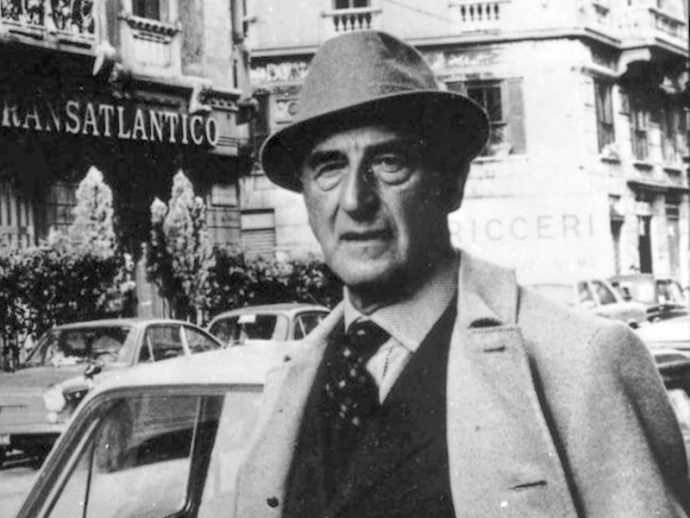
JUSTIFICATION
The Compasso d’Oro is awarded to Gillo Dorfles for his numerous theoretical studies on design and especially for his contribution to the general concept of contemporary aesthetics, along with his constant activity carried out over many years promoting the spreading and clarification of ideas regarding design.

JUSTIFICATION
The 1970 Compasso d’Oro is awarded to Domus Editorial for having dealt with the theme of research and its dissemination through its magazines over the years, in particular “Stile Industria”, and also “Casabella”, “Domus” and other ventures in the field of design in Italy and abroad.

JUSTIFICATION
The 1970 Compasso d’Oro has been awarded to Edizioni di Comunità for having investigated the problem of design in the magazines, “Comunità” and “Zodiac” and through specialized publications, looking at the issue in the context of the problems of architecture and urban planning while always keeping the overall social purpose to which industrial design can contribute in consideration.
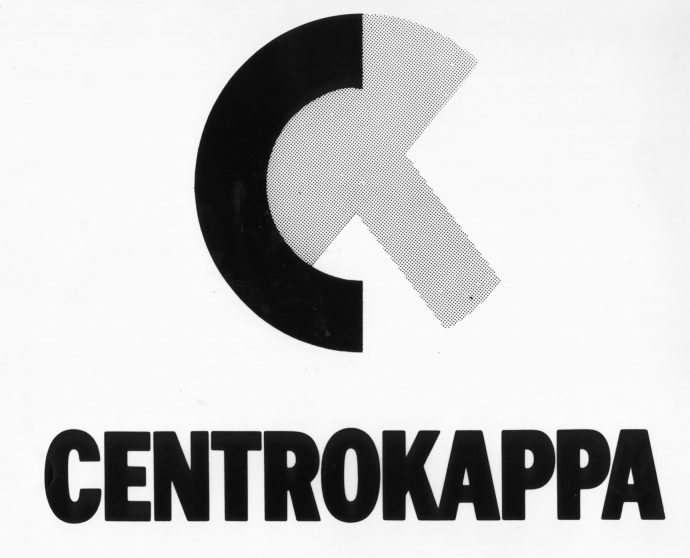
A group of over twenty creative professionals from the design sector, including Michele De Lucchi and Paola Navone and managed by Valerio Castelli. It developed design and communication projects, such as the 1979 Sistema Scuola intended for the furnishing of nursery schools, and organised numerous cultural events to promote Italian design. The award was given for the corporate strategy based on the consistency of product design and constant research and evolution of the image.
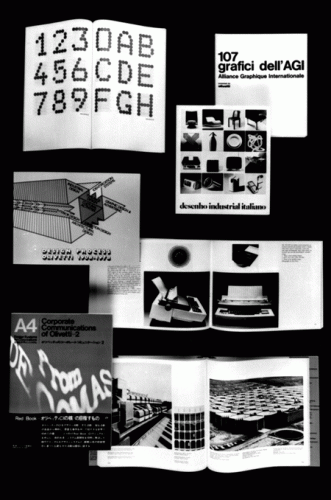
A department of the company that represented a model of corporate cultural design on an international level. From 1965 it was managed by Renzo Zorzi and was dedicated to the spreading of art, technology and design in connection with exponents of Italian literary and artistic culture who played significant roles in the company, from Giorgio Soavi to Riccardo Musatti and Geno Pampaloni.
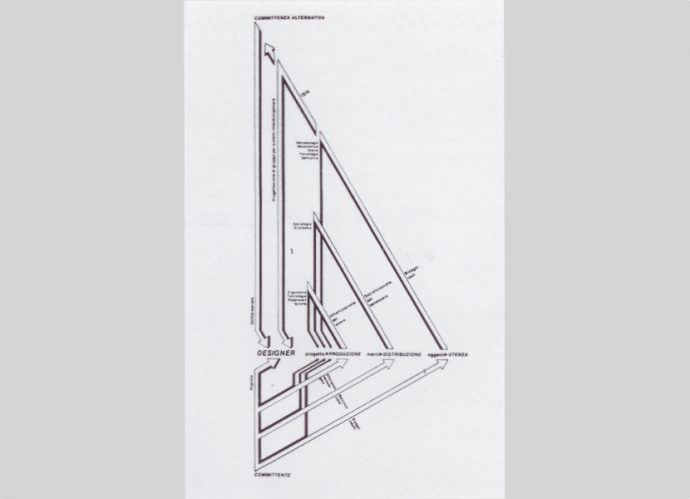
The first design school established by the Italian state and heir to the Advanced Course in Industrial Design and Visual Communication active in Rome between 1965 and 1970. Chaired by art historian Giulio Carlo Argan and directed by the sculptor Aldo Calò, its teachers included designers and design historians such as Andries Van Onck, Rodolfo Bonetto, Enzo Frateili, Pio Manzù, Renato Pedio, Maurizio Aymonino, Filiberto Menna, Achille Perilli and Michele Spera.

Founded by Giulio Castelli, a graduate in Industrial Chemistry, it first produced car accessories in plastic, a material whose extraordinary potential Castelli was among the first to become aware of. It then went on to manufacture furnishing accessories, establishing itself in the domestic sector thanks to applications suggested by top designers including Anna Ferrieri Castelli, Marco Zanuso and Philippe Starck. A Labware Division was created in the 1960s for the supply of items for laboratories and today it is among the most innovative furniture manufacturers in the world.
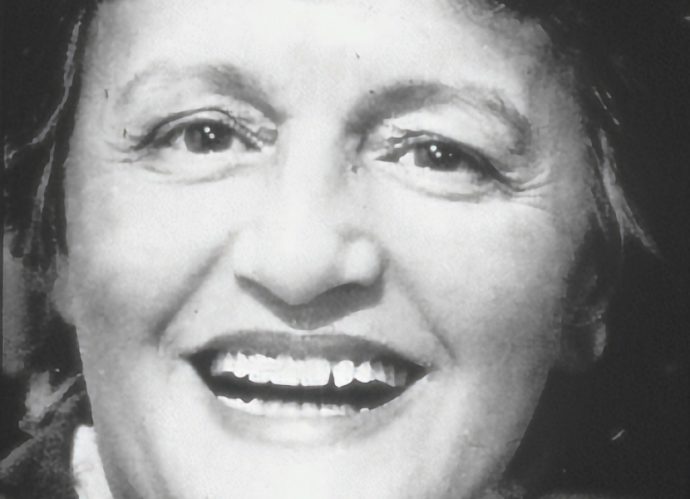
General Secretary of ADI since 1972, she was its organizational and proactive heart and soul during the management of the Compasso d’Oro and the association’s national and international exhibitions, including 100 designers, set up at the Milan Triennale in 1984 to mark the ICSID International Council of Societies of Industrial Design conference. She also worked on the relocation and transfer of the association’s Milan office from via Clerici to via Montenapoleone, and above all the tireless interweaving of relationships with institutions, companies, sponsors and supporters, demonstrating, according to the Compasso d’Oro jury, “constant dedication to the Award itself and thus to the general spreading and promotion of industrial design “.

Founded by the designer Enrico Astori, his sister Antonia Astori (designer) and his wife Adelaide Acerbi (images and communication), its hallmark was the integration of the production of quality furniture items designed by great designers with distribution and communication. It made his debut with the Driade1 wardrobe (Antonia Astori 1968), transformed in 1972 into Oikos, an independent division. Since the 1980s, it has been open to international collaborations (Philippe Starck, David Chipperfield, John Pawson, Tokujin Yoshioka since 2002) and has become well-known for experimenting with new forms and new living solutions.
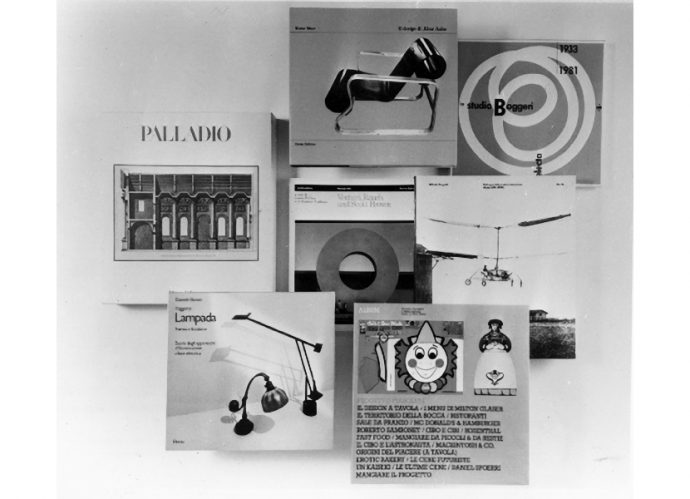
Heir to the publishing house that produced the works of the art historian Bernard Berenson in Florence, at the end of the 1950s it relocated to Milan and specialized in art and architecture publishing, of which in the mid-1960s it was the leader in Italy, expanding to include the theme of design. With a catalogue that in the 1980s offered over 1,500 titles, in the 1990s it opened autonomous branches throughout the country. Part of the Mondadori group since 1994, it has built up a network of bookstores and services located inside some of the most significant Italian museums.
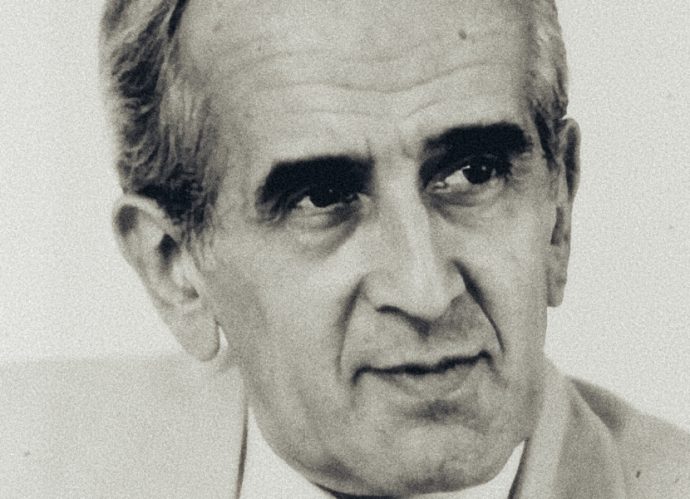
Painter and businessman, he worked in 1957 as an image consultant on the foundation of Abet Laminati, placing design as a link between communication, research and marketing. In 1963 he created the Architects Consulting Group (Ponti, Magistretti, Romano, Caccia Dominioni and Casati) within the company and invited Ettore Sottsass to collaborate. He then worked with the Renault group on innovation, the Atelier Mendini on decor and with Fiorucci Dxing (with Giannino Malossi) on fashion usage.
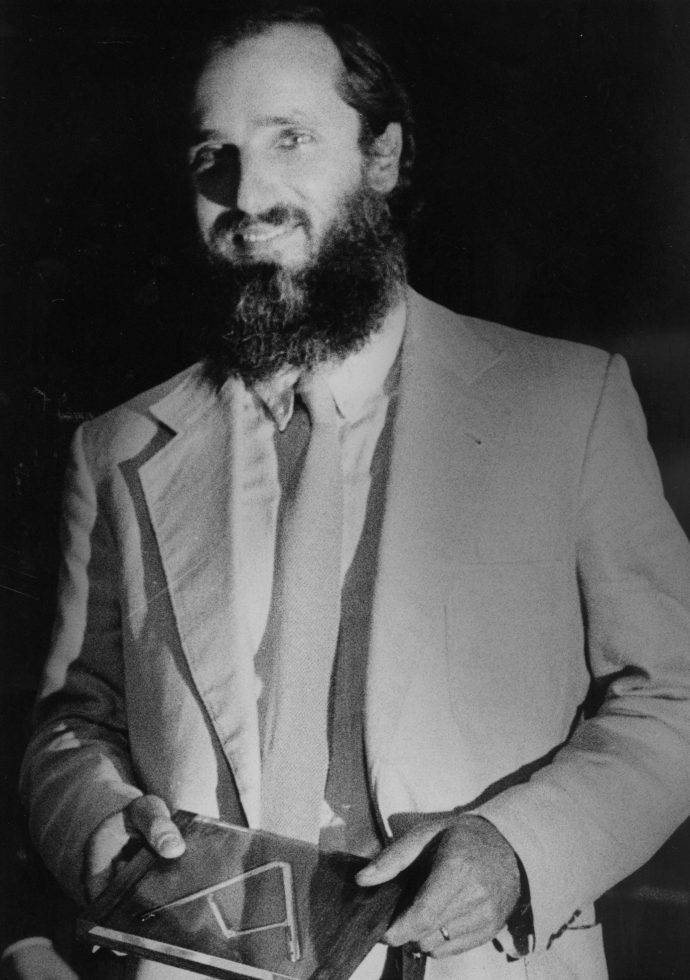
Graduated in Milan in 1964, he travelled throughout Great Britain and the United States. From 1971 he collaborated with Richard Rogers on the design of the Centre Georges Pompidou in Paris (1977, with Gianfranco Franchini). He founded the Renzo Piano Building Workshop in 1981 with offices in Genoa, Paris and Osaka, which resulted among other s in the creation of the Porto Antico in Genova (1992), Kansai airport (Osaka, 1994), the reconstruction of Potsdamer Platz (Berlin, 2000), the Parco della Musica Auditorium (Rome, 2002) and the viaduct over the Polcevera (Genova, 2020).

A small artisan’s workshop for the manufacture of wood burning stoves founded by Antonio Zanussi, it began to expand in 1933 with the creation of the Rex brand and the launch of the Patent wood burning stove in 1935, which was exported to Austria and Germany. After the war, the founder’s sons, Guido and Lino transformed the company into an international ‘white goods’ brand, which from 1960 onwards also produced televisions. From 1963, as a joint-stock company with increasingly large international shareholdings, it was eventually incorporated into the Electrolux group.
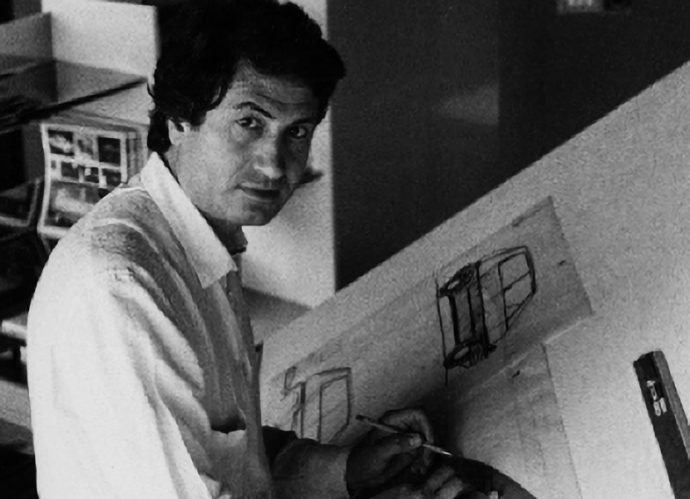
Hired in 1955 by Dante Giacosa at FIAT, in 1959 he became head of style for the Bertone bodywork section: among other things, he was responsible for the Alfa Romeo 2000 Sprint and the Fiat 850 Spider. From 1965 he was director of the Ghia Style Centre (De Tomaso Mangusta, Maserati Ghibli). In 1967 he founded Ital Styling, and Italdesign in 1968 with Gianni Mantovani, offering design and engineering services to major European brands and creating cornerstones of automotive design such as the Golf, Panda, Passat, Thema and Uno.
JUSTIFICATION
The Compasso d’Oro for an Italian individual notable for a wide range of activities was awarded to Giorgetto Giugiaro for the impact and quality of design that has distinguished the success of his design group over the past few years and for the vast range of product categories produced both in and outside Italy. Giugiaro expresses the future of the profession of industrial designer, based on an interdisciplinary strategy and specific expertise in integrating many new technologies and disciplines with the typically Italian artisanal tradition and intuitive creativity. The remarkably high level of design engineering applied to such diverse products as cars, sewing machines and musical instruments exhibited in this exhibition clearly illustrates the jury’s opinion. In addition to the quality of the designed products, which often contributes to increased exports, the Ital-Design group has been particularly successful in professional design services. This invisible export of Italian ideas and designs may well become an important extension of a future economic renaissance as well as having an international impact perhaps greater than that of the products themselves exported and so highly appreciated abroad. In a country like ours which is based on an economy of transformation and in which design is fundamental, Giugiaro’s contribution expresses the maturity of Italian design in being able to explore the future in close collaboration with industrial and commercial activities and which ends up by being the truest expression of industrial design.

Graduated in Architecture in Florence, in 1964 he was one of the founders of Archizoom Associati and in 1973 he moved to Milan, taking part in the Alchimia group activities. Co-founder of the Domus Academy in 1982, he edited the magazine Modo (1982 – 1984) and was a lecturer in Interior Design at the Milan Polytechnic as well as participating in the Memphis group. Author of numerous volumes (from La casa calda [the hothouse], 1984, to Introduzione al design italiano [An introduction to Italian design] 2015), he has been curator of exhibitions in Italy and abroad.
JUSTIFICATION
The Jury of the XIV edition has decided to give the 1987 Compasso d’Oro Award to Andrea Branzi for his dynamic intellectual commitment exercised through design, critical, didactic and research activities aimed at design disciplines. His contribution to the cultural enrichment of design and the widening of problematic areas pertaining to it in a period of apparent crystallization of the trends practiced has been highly stimulating.

JUSTIFICATION
The Jury of the XIV edition has decided to present the 1987 Compasso d’Oro Award to Cosmit for its clearly evidenced desire to highlight the production sector that is most sensitive to design since the first edition of the Salone del Mobile. It has thus helped to shape its quantitative growth and cultural commitment, not least through the constant attention dedicated to international communication.
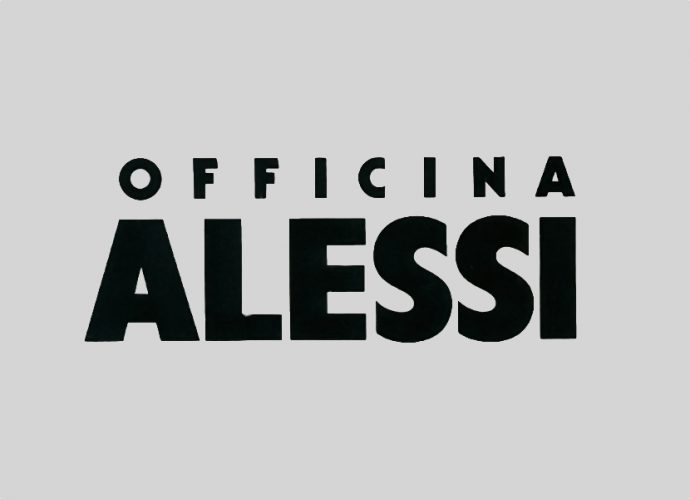
JUSTIFICATION
The Jury of the XIV edition has decided to give the 1987 Compasso d’Oro Award to Officina Alessi for developing acquiring the cultural leadership of its sector through a continuous and meticulous quest for the highest and most advanced poetic expressions of international design, which have frequently been transferred from the world of architecture.
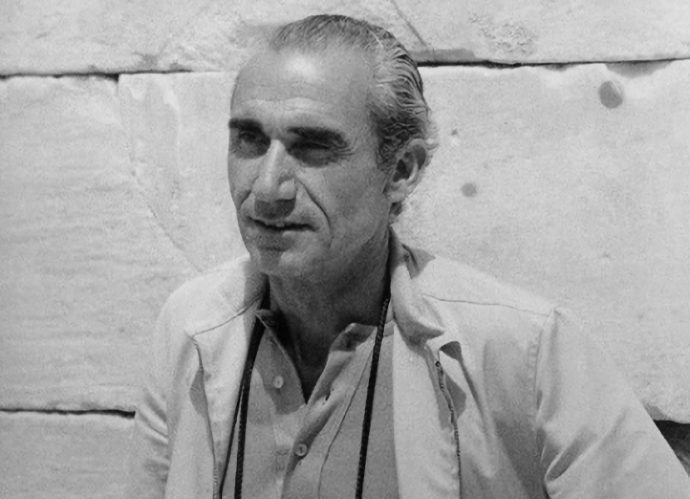
Graduated in Architecture in Milan in 1947, in 1952 he founded the PFR studio with Ponti and Fenaroli, participating in the projects for the Pirelli skyscraper in Milan (1960). In 1954 he founded the Stile Industria magazine which he directed until its closure in 1963. His design creations include the Condor armchair (Arflex 1960), the Bar table (Kartell 1967), the Meteor bus (with Isao Hosoe, Orlandi 1970), the P110 armchairs (Saporiti 1971) and the Casa Mobile for the New Italian Landscape exhibition at MoMA in 1972. Among the founders of ADI, he was its first president (1956-1957) and with Marco Zanuso he created the three-dimensional version of the Compasso d ‘Oro based on a design by Albe Steiner.
JUSTIFICATION
The Jury of the 14th edition has decided to give the 1987 Compasso d’Oro Award to Alberto Rosselli. ” L’intervallo del tempo (The interval of time)”, to use one of the perfect terms that only Gillo Dorfles can come up with, sees the figure of Alberto Rosselli emerge in its entirety through his rigorous commitment to design as seen through his professional creations, the foundation of the Compasso d’Oro and ADI and the still unsurpassed intuition and intelligence of the magazine “Stile e Industria”.
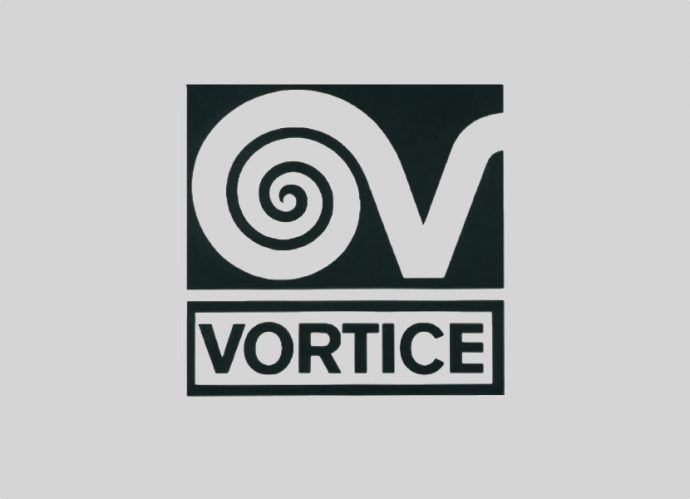
JUSTIFICATION
The Jury of the XIV edition has decided to give the 1987 Compasso d’Oro Award to Vortice Elettrosociali Spa, for the continuity of its commitment to product development through design in the electric ventilation sector.
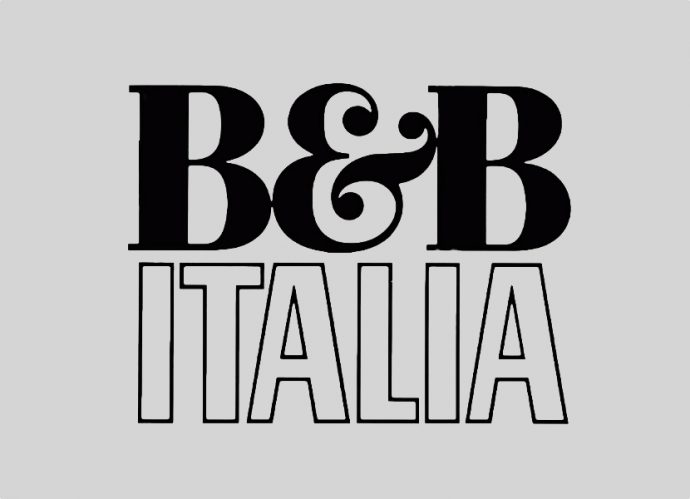
JUSTIFICATION
The Jury of the 15th edition held in Milan on 12th April 1989 unanimously decided to give the Compasso d’Oro Award to B&B for its constant integration carried out in order to combine the values of technical-scientific research with those necessary for the functionality and expressiveness of its products.
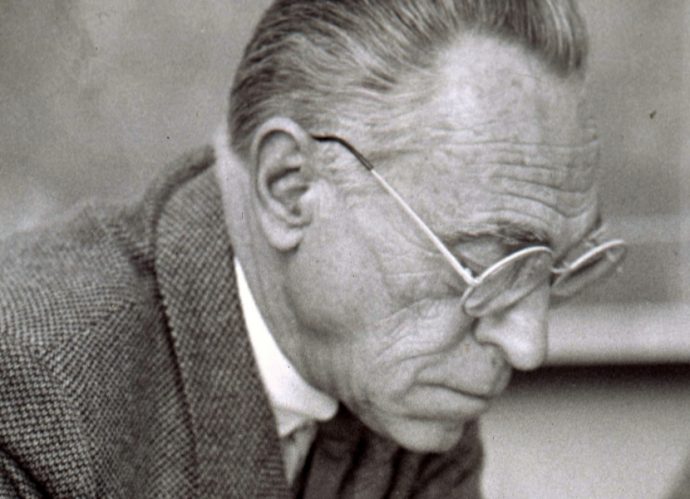
Graduated in Milan in 1944, he was employed in the studio of the Livio and Pier Giacomo brothers working on urban planning, architecture and design projects. Among the founders of ADI in 1956, he designed numerous objects that have become symbols of Italian design, such as the Mezzadro stool (with Pier Giacomo, Zanotta 1957), the San Luca chair (Gavina, 1960), the Arco lamp (with Pier Giacomo, Flos 1962 ) and the Record clock (Alessi 1982). Among his numerous awards, he has eight Golden Compasses, in addition to that for his career.
JUSTIFICATION
The Jury of the 15th edition held in Milan on 12th April 1989 unanimously decided to give confer the Compasso d’Oro Award to Achille Castiglioni, for having raised design to the highest values of culture through his irreplaceable experience.

JUSTIFICATION
The Jury of the 15th edition held in Milan on 12th April 1989 unanimously decided to give the Compasso d’Oro Award to the Istituto Commercio Estero (Foreign Trade Institute) – I.C.E. for the extraordinary organizational and coordination effort made in recent years to spread knowledge and awareness of Italian design throughout the world, through a careful and balanced use of various communication tools such as interviews, round tables, seminars, conferences, catalogues and exhibitions, including the Compasso d’Oro, Amsterdam, July-August 1987; Forum Design, Singapore, October 1988 and Italia 2000, Moscow, October 1988.

JUSTIFICATION
The Jury of the 15th edition held in Milan on 12th April 1989 unanimously resolved to give the Compasso d’Oro Award to Tecno, for the high level of cultural quality expressed over time through the interpretation of the various display, production and graphic systems.
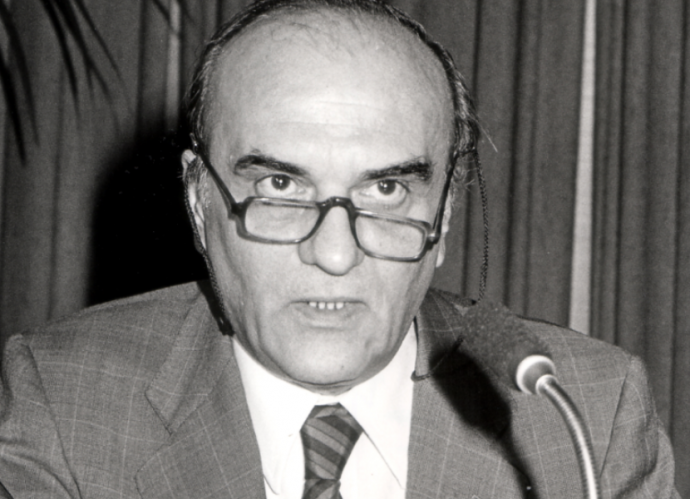
Self-taught, he made his debut in the 1950s with sketches of cars for Pininfarina, Vignale, Viotti, Boneschi and opened his own studio in 1958 in Milan collaborating with Veglia Borletti. He taught at the Hochschule für Gestaltung in Ulm (1961-65) and at the ISIA in Rome (1974-79). He was president of ADI (1971-1973) and of ICSID (1981-1983). His projects include the Sfericlock clock (Veglia Borletti 1962), the Auctor Multiplex machine tool (Olivetti 1967), the Linea 1 television (Autovox 1969), the Rotor public telephone (Sip 1989) and the interiors of numerous cars for FIAT. In addition to his career, he won seven Compasso d ‘Oro.
JUSTIFICATION
For his multiple activities in the field of design which, through the vast categories of products created, have contributed to the confirmation of Italian design worldwide, and for his dedication to teaching and his associative activities at both national and international level.

JUSTIFICATION
For its innovative role on the Italian cultural and manufacturing scene and being a forerunner in the international opening of its production as well as having contributed to the overall enhancement of design culture through its activities.

JUSTIFICATION
For having developed over time a highly consistent design and manufacturing philosophy in which design culture has represented a common denominator and an element of distinction.
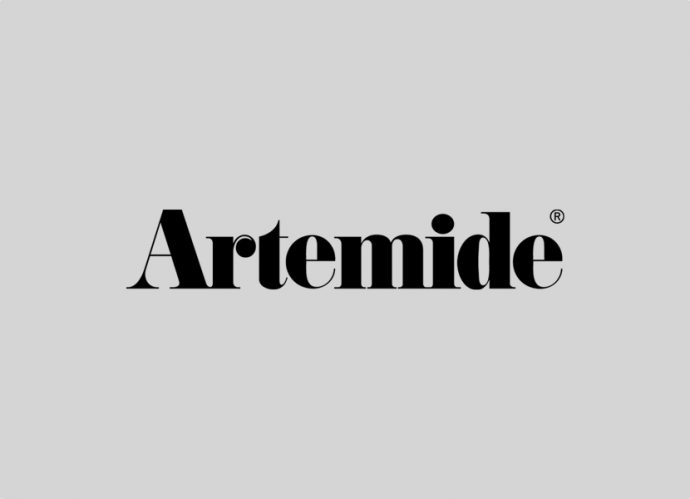
JUSTIFICATION
For a well-expressed contribution to the culture of furniture, the often advanced use of materials and technologies, together withh the design skills of Ernesto Gismondi, and for the overall quality of production and image.

JUSTIFICATION
In memory of its founder Dino Boffi and in recognition of the constant quest quality, ergonomics and integration in the home which, with the design and construction of kitchens, have often marked the history of the sector at an international level.

JUSTIFICATION
The constant attention to front page issues ranging from the humanization of technologies to the exploration of links between design and fashion and from reflections on the sociology of design to design management and service design, the quality of teaching and editorial achievements all go to make Domus Academy a leading factor in the new reputation of Italian design knowhow.

JUSTIFICATION
Developed thanks to Sergio Gandini’s pragmatism with and for industrial design, Flos has been able to successfully adopt an advanced policy of exploration, building a coherent range of products that testifies how the same business objectives can be translated into cultural factors.
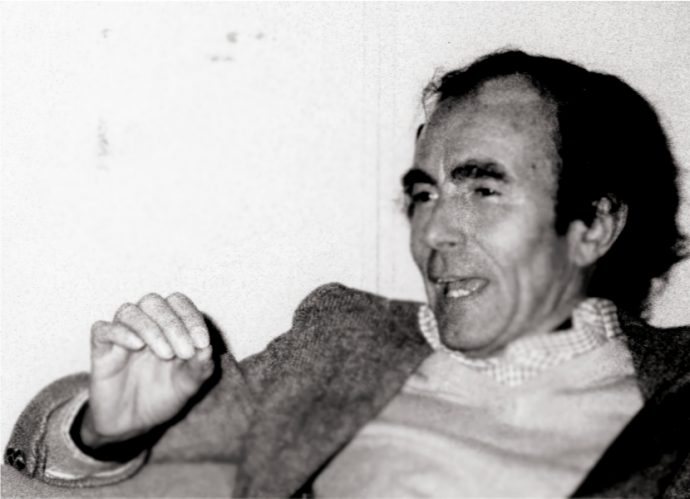
He was one of the founders of the Movimento Studi Architettura (Architecture Studies Movement) and actively involved in post-war reconstruction including houses, office buildings, hotels and cinemas. His most significant buildings include the Department of Biosciences at the University of Milan (1978), the Tanmoto house in Tokyo (1985) and the Famagosta depot for the Milan Underground (1989). As a designer, among other things he created for Artemide (the Eclisse lamp in 1967, the Selene chair in 1982), Cassina (the Maralunga sofa in 1973) and Oluce (the Atollo lamp in 1977). He received three Compasso d ‘Oro in addition to his career award.
JUSTIFICATION
For his complete body of work and in particular for his entirely personal research conducted into the field of furniture, the results of which are often so surprising as to make the variation indistinguishable from radical innovation.
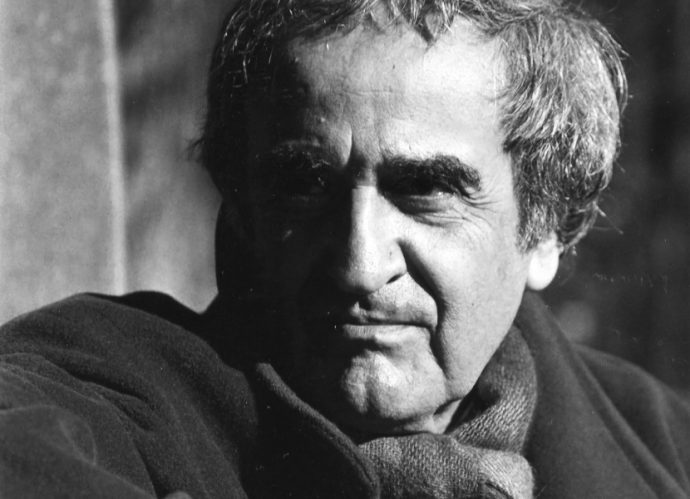
In 1935 he was among the promoters of the Concrete Art movement in Argentina and in Germany in 1954 he was one of the founders of the Hochschule fur Gestatung in Ulm, where he taught until 1965, moving on to Princeton University until 1970. In 1967 he moved to Italy where in 1971 he was one of the founders of the DAMS course at the University of Bologna and, at the Milan Polytechnic, he coordinated the first Italian degree course in Industrial Design, then going on to contribute to the development of the Design courses at the IUAV University of Venice. Author of numerous essays, he was editor of Casabella magazine from 1979 to 1983.
JUSTIFICATION
For having illustrated the culture of industrial design through an entire life of studies and work and exercising an intellectual charm that constantly accompanied the development of Industrial Design at an international level. While the illuminating studies (both early and recent) from his vast oeuvre into material culture have been highlighted, mention should be made of his intense didactic activity which, masterfully expressed at the Hochschule fur Gestaltung in Ulm / Donau (1954-66) and then in Italy, went on to culminate in the recent establishment of the Industrial Design Course at the Politecnico di Milano.
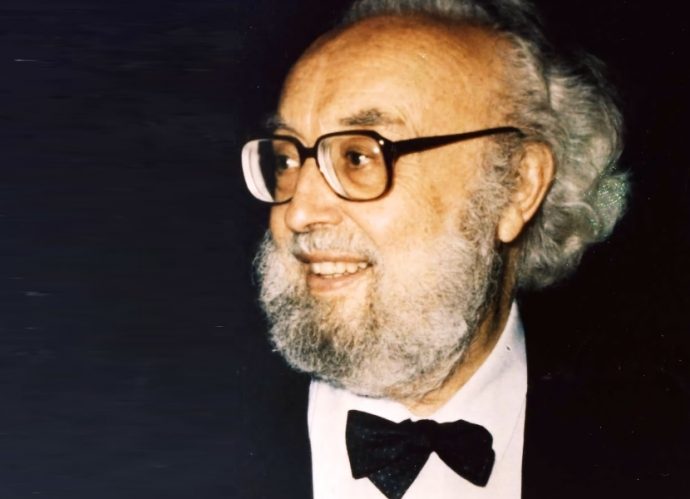
JUSTIFICATION
Graduated in architecture in Milan in 1948, he collaborated on the preparation of the VIII and IX Triennale. Visiting professor at the Illinois Institute of Technology (1953-54), he designed, among other things, the Cavalletti system (Agape, 1953), the Lesbo and Saffo lamps (Artemide, 1967) and the Tre 3 chair (Skipper, 1978). In the 1960s he taught at the Higher Institute of Industrial Design in Venice, then at the faculties of Architecture in Palermo and Florence, then at the Milan Polytechnic, where in 2002 he received an honorary degree.

JUSTIFICATION
Among the leading figures of Italian furniture culture, it has been able to present an offer of products designed with constant dignity, safe quality and a broad vision of the cultural context.
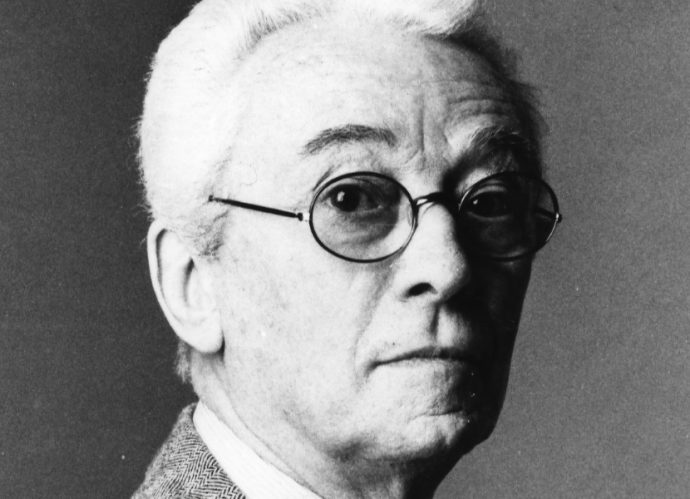
JUSTIFICATION
For having been in sixty years of work as a designer and artist one of the most extraordinary examples of sensitive intelligence, critical humour, humanity in design and above all the happy overcoming of every barrier to creativity.
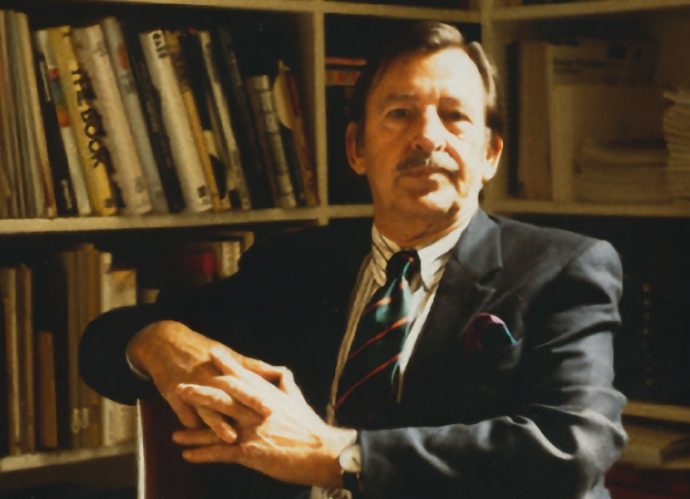
JUSTIFICATION
Graduated in Amsterdam in 1950, and working in Milan since 1956, he became art director of Pirelli in 1961 and, from 1963 to 1964, artistic consultant at La Rinascente. He founded Unimark International (1965) with Gregorietti and Vignelli, designing the signage of the New York, San Paolo and Milan Undergrounds He worked for publishing houses (Vallecchi, Sansoni, Feltrinelli), and designed the corporate identities of AGIP, Dreher, Chiari & Forti and Mitsubishi. Winner of three Compasso d ‘Oro in addition to his Career Award, he designed the coordinated image of ADI and the ADI Design Index brand (1999).

JUSTIFICATION
In recognition of the value of a legacy that has illuminated Italian culture, first with Adriano and Roberto Olivetti and in more recent years, with validly participating in the difficult and complex development of the culture of information technology. The Award is also intended to signal and encourage Olivetti’s convinced dedication to the development of new IT-telematic opportunities that are initiating epochal changes in culture and society.

JUSTIFICATION
For having been able to simultaneously confer continuity and innovativeness of purpose and quality to the process of car design begun by his father and recently culminated with the appearance of the ethical dimension in the most advanced research. Furthermore, for having contributed most to the image of Italy through Ferrari design and for having been able to develop a different direction in the destination of design skills in less common areas.
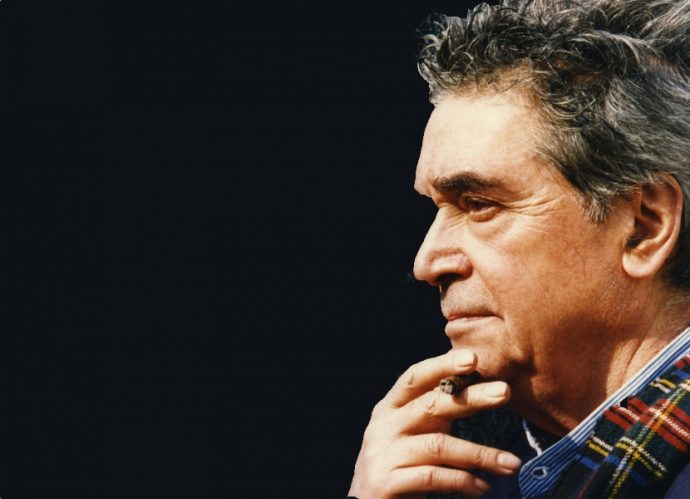
JUSTIFICATION
For the ability – expressed in the course of a lifetime and which is the paradigm of the “complete” designer – to constantly deal with the most diverse themes of product design and image with a high level of quality and suggestion.

JUSTIFICATION
Founded in 1954 thanks to the foresight and courage of Nino Di Salvatore Italy’s first independent design school had leading figures of Italian industrial design as its teachers, training thousands of Italian and foreign professionals and, through them, also influencing the opening of new schools in various countries around the world.
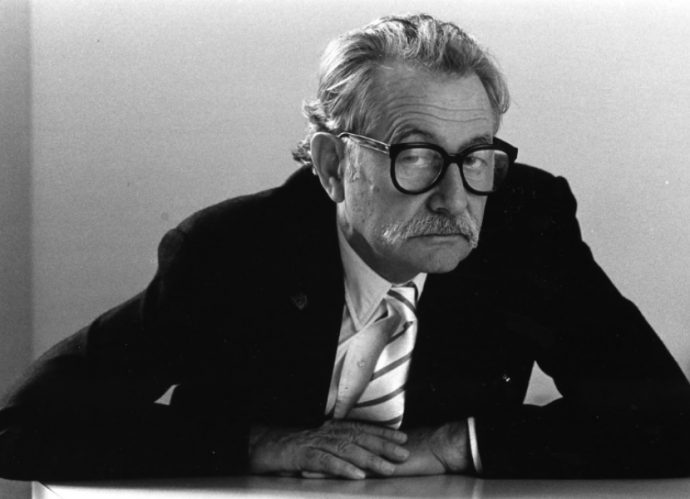
JUSTIFICATION
For having contributed most to the inauguration and development of an entire expressive season in which, characterized by a singular and considerable critical-polemical commitment, he has extended the horizons of design to include often essential factors of the complexity of life that he has previously brought to light.

Graduated in Architecture in Venice (1948), he made his debut in his father’s Valle Architetti studio, continuing the business. In 1951 he studied at the Harvard Graduate School of Design. Back in Italy, he collaborated with Solari designing numbered display clocks and information signboards for airports (1957-1963). He then worked for Zanussi and taught at various universities in Europe, the USA and South Africa. His architectural projects include the Zanussi headquarters in Pordenone (1961), the Banca Commerciale Italiana in New York (1981) and the renovation of the Olympia Theatre in Paris (1996). He was awarded two Compasso d ‘Oro in addition to his career award.
JUSTIFICATION
For having opened up new perspectives regarding the design of complex industrial assets, through the organizational renewal of the design process, especially in large companies thereby achieving excellent design results.

Graduated in Architecture in 1939 in Milan, he was editor of Casabella from 1953 to 1956 and collaborated with Arflex, Necchi and Borletti. From 1959 he started designing televisions (Doney, 1962) and radios (Cubo, 1964) with Richard Sapper for Brionvega. In 1964 he began collaborating with Kartell and Siemens and designed the Grillo telephone (1967) with Sapper. His projects include the Olivetti complexes in Argentina and Brazil (1961), the Necchi plants in Pavia (1961) and the Piccolo Teatro in Milan (1978). In 1956 he participated in the foundation of ADI, of which he was president from 1966 to 1969. He was awarded six Compasso d ‘Oro in addition to his Career Award.
JUSTIFICATION
One of the great masters of industrial design and one of the most convinced and capable animators of design culture in the last fifty years

JUSTIFICATION
Fantoni, awarded the Compasso d’Oro Career Award is a company that knows how to translate the activity of producing a material – Medium Density – into a piece of constant proactive, metaproject and design research, together with its appropriate translation into final products; evolving the all-Italian tradition of “primary design”.In terms of the evolution of a vast range of diverse types and rheological structures attributed to the specific destinations of the variants of the material and its finishes, Fantoni has explored and continues to explore not only the most convenient possibilities for their application, but also those for reducing environmental impact – from the forest, to production processes and to the final use of the materials themselves.Resulting from research into materials, the products that Fantoni presents directly to the end user also constitute paradigmatic proposals in accordance with the most advanced practices of “competitive collaboration”, as examples of possibilities elsewhere and which can be further developed.The Osoppo factory itself – conceived and designed by Gino Valle to grow over time, constitutes one of the main cases of an intelligent, sensitive and well developed integration into the landscape, to the point of positively demonstrating the well-known thesis in which the landscape it is primarily the result of the presence of man.The image of the company – resulting from the coherent expressive trait of all the creations – thus becomes an example of total design towards which all truly excellent companies are heading.

JUSTIFICATION
Founded by Gio Ponti in 1932 as the “artistic” division of Luigi Fontana, Fontana Arte was a company that developed as a research centre into the particular characteristics of glass, with results that made it one of the leading figures of pre-war Italian design. The Compasso d’Oro for Lifetime Achievement at Fontana Arte – together with the memory of the now classic designs by Ponti and Pietro Chiesa – is intended above all to indicate, for example, the rigorous twenty-year-long intervention that, led by Carlo Guglielmi and his team of managers, was able to redeem the company and its name from past entrepreneurial and cultural mistakes through a radical change of orientation, the recovery of the culture of the company and a courageous thematic diversification that underwent continuous evolution. It also is intended to recognize how the predisposition of an intelligent creative climate has been able to adequately involve designers who, not only in the products, but in the graphics, the installations and in every communication gesture – in a word, in the overall image – have contributed to redevelop the top level one of the historical names of Italian production and prestige, and not just onf terms of furnishing.
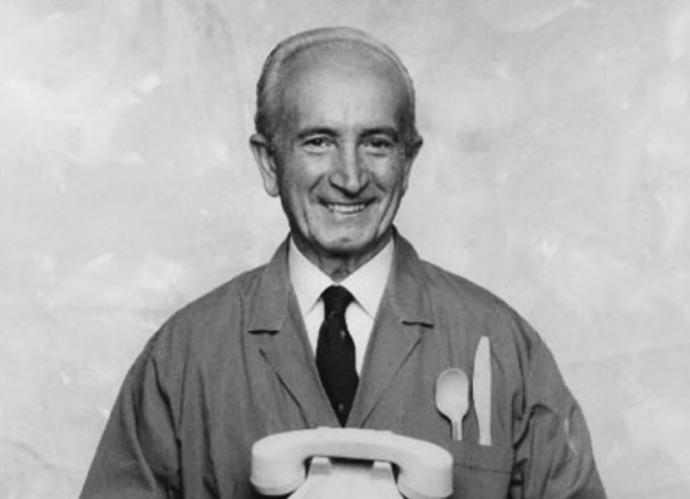
Mechanical model maker attracted by industrial design, in 1951he moved from making foundry models to industrial models, collaborating with Nizzoli, Albini, the Castiglioni brothers, Sottsass, Zanuso, Giò Ponti and Munari for companies such as Olivetti (Lettera 22, 1950), Necchi (Mirella sewing machine, 1956), Brionvega (TV Doney, 1962), Siemens (Grillo telephone, 1965) and Alessi (Cupola coffee maker, 1988). At the end of his activity he had created 8,000 models and 25,000 design models.
JUSTIFICATION
For decades Giovanni Sacchi has represented the best in terms of designed product models. The first, exactly fifty years ago for Marcello Nizzoli at Olivetti was the Lexicon. The last is still to be done.
From the outset his models were created from a partnership of work, sensitivity and thought: Sacchi is often the hand that thinks in wood together with the heads of others; which makes Denis de Rougemont’s penser avec les mains true by becoming the interlocutor of research without ever betraying it. Even when he made working models of Leonardo’s machines and guessed the solutions unexpressed in the drawings, it could be said that for Sacchi the Codex Atlanticus had fewer mysteries than for critics and scholars.
For the designer, his chisel becomes a pencil, and this becomes, through his hand, a tool; because – capable of simulating the final materials in wood – he knows how to overcome the abstract limits of design; he always knows how to become a collaborator; and what’s more, always available, dedicated and tireless. Without intentionally doing so Sacchi ended up choosing, due to his expertise, the high points of Italian design while many companies have decided to produce precisely on the basis of the perception and judgment induced by his model which therefore acts as an interface between the idea and the designer, and between this and the client. In this sense, the responsibility – and the merit – of many achievements are also due to him.
To this extraordinary and unique career which spread throughout collections, design studios and company archives, an ideal museum of final, provisional, transitory models and yet unrepeatable witnesses of the process that led to the final outcome – the Compasso d’Oro was obligatory in 1998, fifty years after his first success; and two-thirds of a century after his first work.
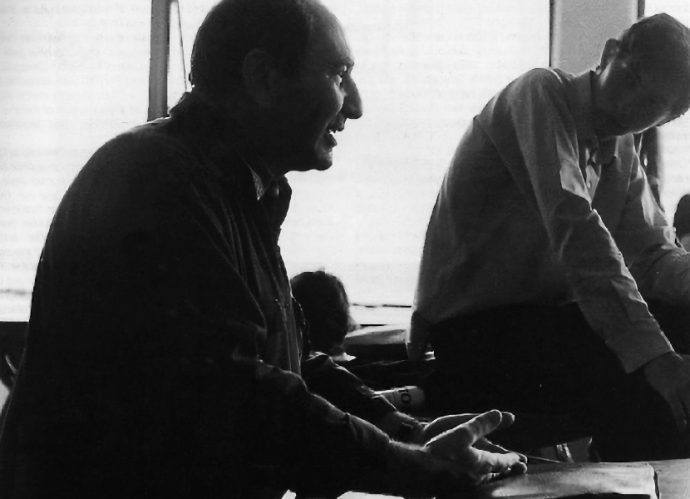
A pioneer of Italian graphics, in 1939 he opened a studio in Milan with his wife Lica, creating the “Politecnico Biblioteca” series for Einaudi in 1945. From 1946 to 1948 he was in Mexico and returned to Milan where from 1950 to 1958 he was art director of La Rinascente, for which he designed the Compasso d ‘Oro brand. A founding member of ADI, he collaborated with cultural institutions and companies, dedicating himself in particular to editorial graphics for Feltrinelli (1955-1965) and Zanichelli. Until 1958 he taught at the Collegio Rinascita and from 1959 at the Scuola del Libro della Società Umanitaria.
JUSTIFICATION
Albe Steiner, born in 1913 and died prematurely in 1974, has characterized since 1933 an entire season of Italian graphics, intertwined in the most radical and advanced Rodcenko expressive tradition- with political and civil commitment.
A man of vast cultural and social interests and convinced that “freedom is culture”, Albe Steiner set up Elio Vittorini’s legendary magazine “Il Politecnico” immediately after the war, created the Liberazione della Ricostruzione Exhibition with Gabriele Mucchi, collaborated with Hannes Meyer former director of the Bauhaus, and worked intensely in the Milan Umanitaria, also as director of his pet project, the Scuola del Libro.
Animator at the Triennale Study Centre and founder of the Artists Union, of the Graphic Studies Centre, the AGI (Alliance Graphique Internationale), ADI, ANEDI and ICTA as well as curating countless public, private and political publishing productions, he published the historical “distance” didactic lecture notes on the history and technique of the manifesto for the Accademia di Roma. He also edited Zanichelli’s ‘experimental scientific book’ and set up series and magazines for Feltrinelli. His contribution to la Rinascente, especially during the establishment of the Compasso d ‘Oro, gave an unmistakable character to the image of the award, while the other cultural and commercial achievements of the department store are also remembered for his always illuminating interventions, not only strictly graphic, which contributed in particular to distinguish it, also on the international scene.
Collaborator of various Venice Biennials and with Coop, RAI, Pirelli, Olivetti, Bemberg, Linoleum, Heller, Bertelli, Geigy, Cedit, Necchi, Lark and Aurora, he conceived Pierrel’s corporate identity which remains a milestone in history not only in the context of pharmaceutical graphics and packaging. Enthusiastic, tireless, courageous, Albe Steiner was one of the great masters of life and knowledge, who knew how to accompany the profession and politics with the didactic commitment and generous care of young people. The vast book and newspaper library and the graphic collection that he left are, especially today, a precious reference point for the documentation of the successful years that saw him as a leading figure.
We cannot conclude this motivation for Albe, so pleonastic for those who know the history of design, without mentioning Lica, the apparently fragile companion who always supported him with great, even professional intelligence, with reciprocated affection and even with stubbornness in the difficult and painful phases. Lica Steiner, to whom the Prize is awarded so that she herself has it among the things she experienced with him and never lost.
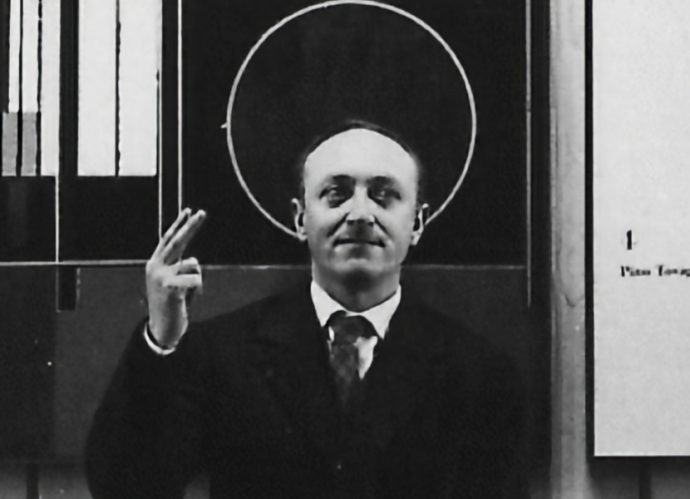
JUSTIFICATION
The visual and expressive research of Pino Tovaglia, who died prematurely in 1977 at the age of 54, was among those dominant – yet discreetly and almost timidly, like its author – in the cultural landscape of the post-war development years and leaving indelible marks on graphic design culture, not only in Italy.
Overcoming the distinctions between formal genres based solely on technical differences – as in the now famous Finmeccanica series in the years of Leonardo Sinisgalli in which, for the first time, line and “burnt” photography were integrated into the graphic context – Pino Tovaglia has greatly contributed in practice to the affirmation of the thesis against those “literary genres” which hindered expressive authenticity at that time.
Author of memorable brands from those of Nebiolo and “Ottagono” to that of the new Alfa Romeo and co-author of the brand for the Lombardy Region, Pino Tovaglia developed famous advertising campaigns such as those for Pirelli in the years of Arturo Castellani, Splugen during the reign of Aldo Bassetti and for Total and Lanerossi; activities that earned him the Palme d’Or for advertising. Founder and president of the Art Director’s Club of Milan and the art director of magazines such as “Pirelli” and “RAI”, consultant at la Rinascente in the years of Giovanni Bordoli, and of Italia Nostra, Mondadori, Flos and Einaudi, he taught at the Scuola Superiore d’Arte del Castello, Umanitaria and at Urbino, then starting up the coordinated image course at the Nino Di Salvatore Polytechnic School of Design in Milan, helping to train an entire generation of graphic designers with a new globalized direction.
An advocate of team work, but self-taught and a researcher by instinct and reasoning; free and independent, logical and subtle, Pino Tovaglia has been able to translate the great themes into the experience of the “everyday” in an approach from which we all still have a lot to learn.
It is primarily for this reason that the Compasso d’Oro is intended to act in memoriam.

JUSTIFICATION
Ferrari’s experience shows that to innovate it is necessary to respect one’s roots. From this point of view, Ferrari represents an industrial and design model that is unique on an international level, both in terms of sporting results and in terms of industrial production. Unceasing scientific and technological research and a universally recognized aesthetic quality, all within an entrepreneurial culture which, by putting man at the centre is able to communicate emotions that go beyond any barrier and distinction.
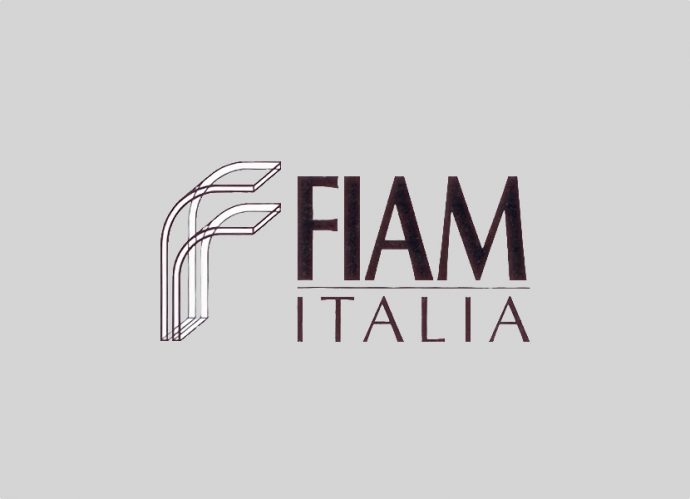
JUSTIFICATION
One of the oldest materials known to man finds a new design dimension in the history of Fiam, where design linked to innovations in the production processes, has allowed unique and totally original solutions. Glass is the principle from which, through the ingenuity of industrial transformations, Fiam’s design has developed and renewed the image of the product inside the home.
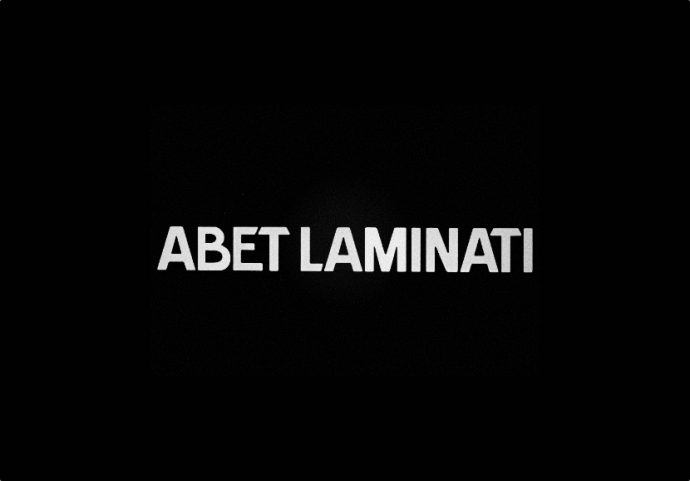
JUSTIFICATION
Design means presenting functions and materials in the light of different expressive purposes. Founded in 1957, Abet has managed to transform a material such as plastic laminate into a product of high symbolic value by virtue of constant collaborations with the most innovative international designers. Carrying out a decades-long vocation, for Abet design represents the language of difference within a world market, in full compliance with the structural characteristics of the material.
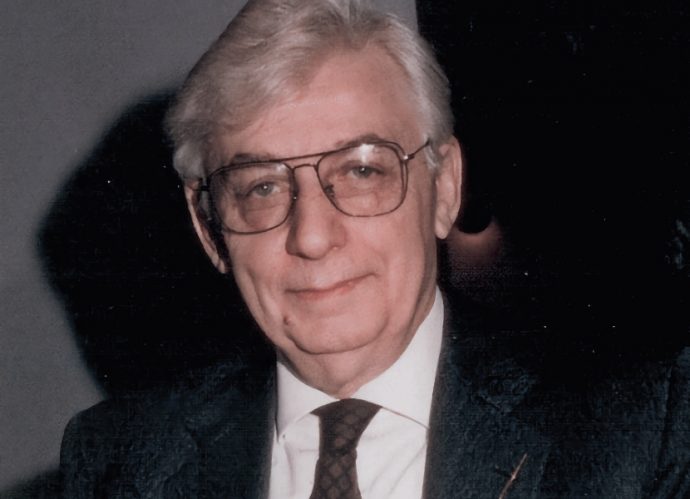
Graduated in chemistry, he worked at Olivetti and then at La Rinascente (1955-1970) as a link between marketing, communication and products. He was one of the leading exponents of international design culture and one of the founders of ADI. Lecturer at the Polytechnic and IULM in Milan, and at the University of Virginia, he edited the second series of the Stileindustria magazine (1995-97). He was president of ADI (1992-98), the ICSID International Council of Industrial Design Companies (1997-2001) and the Milan Triennale (2000-2002).
JUSTIFICATION
The cultural, organizational and managerial activities of Augusto Morello have always been intertwined with the planning dimension linked to design: from his experience with La Rinascente to the foundation of the Compasso d’Oro Award and ADI, of which he was president from 1993 to 1998, up to prestigious positions in Europe and internationally – in particular the presidency of ICSID – without forgetting his current position as president of the Triennale di Milano Foundation. Augusto Morello has always been one of the most important personalities on the strategic level of research and design, never forgetting the need to think alongside the dimension of doing.
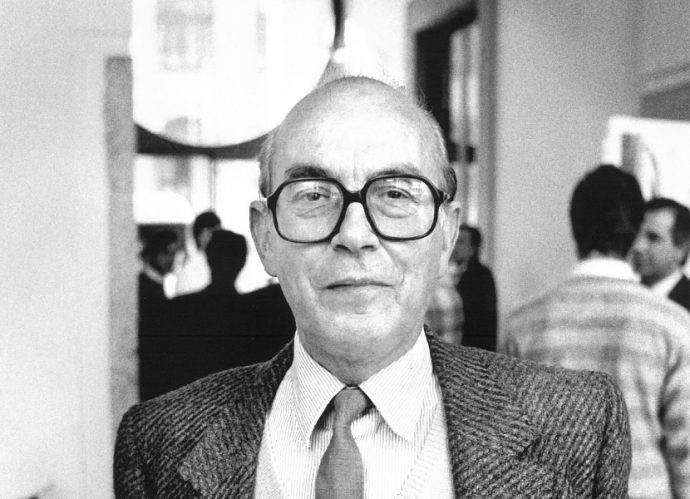
Graduated in Chemical Engineering in Milan in 1949, in the same year he founded Kartell, producing plastic car accessories. He was among the first to understand the potential of plastic in everyday objects, producing household items and furnishing accessories. From the 1960s he worked together with the best Italian and international designers, including the Castiglioni brothers, Aulenti, Colombo, Zanuso, Sapper and in 1956 he was one of the founders of ADI, of which he was president (1957-58) and vice president (1992 -98). In 2000 he founded the Kartell Museum in Noviglio (Milan). Kartell products have received three Compasso d’Oro awards.
JUSTIFICATION
This special award, unanimously conferred by the ADI Executive Committee and the directors of the ADI Foundation for Italian Design to Giulio Castelli, engineer and founder of Kartell spa, is recognition for the tenacity of his work in the historic Association for Industrial Design from 1956, the year of its foundation, to today. A constant and passionate undertaking, conducted together with many others, in the deep conviction that only from the collective work of all those involved in the design system could the desire to witness be born in the preservation of the past and the development of the contents necessary to build the future. The nearly fifty years of history of ADI prove him right.
Photo: Chris Moyse

After attending the University of Grenoble, she began her business activity in the 1950s with an interest in Scandinavian design, of which she became the first importer in Italy with her company ICF De Padova. She began producing office furniture for Herman Miller in collaboration with the Eames, Nelson and Girard. In the 1980s she sold the ICF brand and began producing furniture and objects with the Lei È De Padova brand, collaborating with Magistretti, Castiglioni, Rams and Piano.
JUSTIFICATION
Maddalena De Padova’s outstanding commitment to the creation and spreading of design, as a common culture and form of comparison in various international contexts is a unique example of consistency and quality in Italy. From the mid-fifties to today, her research represents in an exemplary way the happy synthesis between design (company and product), manufacturing and distribution. Her in-depth knowledge of Scandinavian, American and Italian design, due to her collaboration with some of the greatest names in world design such as Alvar Aalto, Arne Jacobsen, Charles Eames, George Nelson, Dieter Rams, Achille Castiglioni and Vico Magistretti to name but a few, combined with her tireless energy, have made De Padova a world reference point for Italian design.
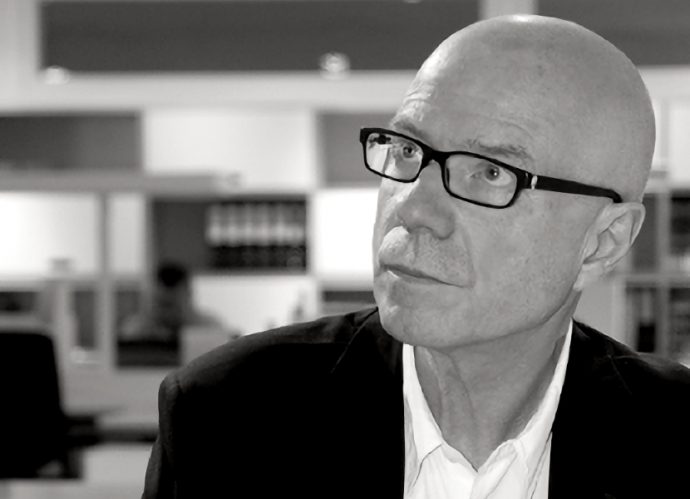
After working in the family business of Vitra in Basel, in 1970 he became editor and producer at the Bavaria Film Company in Munich and from 1973 to 1977 coordinator of the Bavarian Chamber of Architects. In 1977 he took over the leadership of Vitra, drawing inspiration in the product strategy from the designs of Charles and Ray Eames and in 1989 the Vitra Design Museum. In 1960 he began to collaborate with important Italian designers, including Mario Bellini, Antonio Citterio and Alberto Meda.
JUSTIFICATION
An internationally renowned character, he contributed to the reputation of Vitra, a Swiss company of primary importance in the culture of contemporary design. His vision, which broadened the company’s horizon to adopt the social role of proactive agent for the entire sector, has its most enlightened representation of the great European industrial tradition in the form of the Vitra Museum.

JUSTIFICATION
A decades-long dedication to in-depth research into design and comfort, in a specialized field with profound national and cultural diversity is at the heart of the company’s international success. The excellence of its manufacturing and communication throughout its history, represents a contribution to the enhancement of Italian design and its products worldwide.
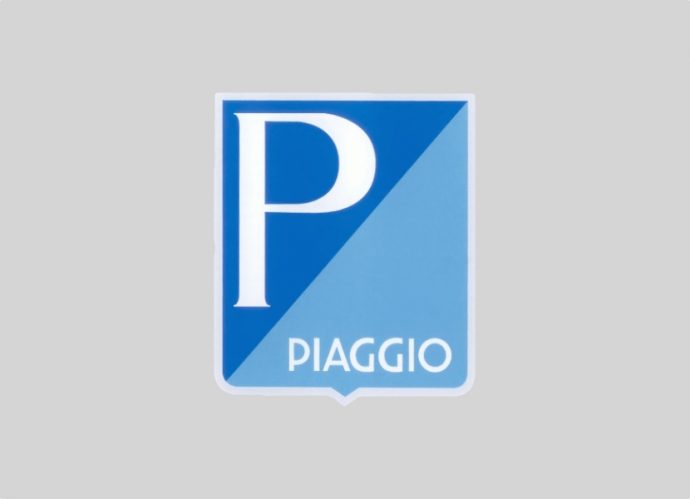
JUSTIFICATION
Product culture, creative engineering and entrepreneurial courage make Piaggio the leading character in one of the most fascinating adventures in Italian design. In April 1946 the Vespa was born, the scooter par excellence, the best-selling and the most imitated in the world with innovative features such as the load-bearing body, the single-sided front fork and direct transmission to the wheel. The Ciao was born in 1967, followed by many new products up to the Sfera, the first scooter with plastic bodywork which won the ADI Compasso d’Oro 1991 award. In 2001, with the Gilera brand, it won the world title in the 125cc class. A regular feature of mass motorization, Piaggio is an Italian company that creates styles, forms of behaviour and modern myths.

JUSTIFICATION
His energetic activities as a designer, entrepreneur and dealer have shaken the traditionalist English market since the early sixties and exploded in his beloved France with the chain of Habitat stores, innovative both in product design and in sales techniques. Having lost control of his company on the stock exchange, he found success with a new collection of products and a new chain of stores in his name. Thanks to his exceptional talent, he was knighted, thereby becoming the first Sir of design.

JUSTIFICATION
Self-taught, autonomous and rigorous, driven by a passion for beauty and fascinated by innovation, since the end of the sixties he has been able to make his shop in Catania a point of reference for the Italian design market. His stubborn work as a courageous merchant and popularizer, carried out in geographically unfavourable conditions have contributed to making the best Italian and foreign companies and products known and appreciated long before they came to fame.

JUSTIFICATION
Over forty years of work as a lecturer, critic, historian and theorist of design has offered generations of students and professionals useful and valuable tools for study and reflection. With op.cit., the magazine he founded and still edits, he has followed and analyzed the path of Italian design from the 1960s to today in the light of the parallel evolution of Art and Architecture. His books have greatly contributed to the disciplinary definition of design.
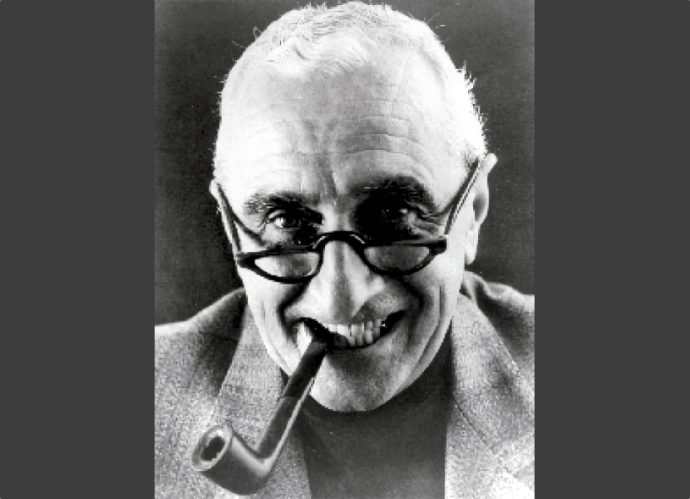
JUSTIFICATION
Among the most important post-war Italian architects, he belongs to that small group of forerunners and founders of Italian design. His work as a designer is characterized by a rare synthesis of expressive rigour, a mastery of formal language and technological knowledge. He offered an objective contribution to the very definition of what Italian design is and the originality of its contents. A belated recognition for a great teacher who has always worked above ideologisms.
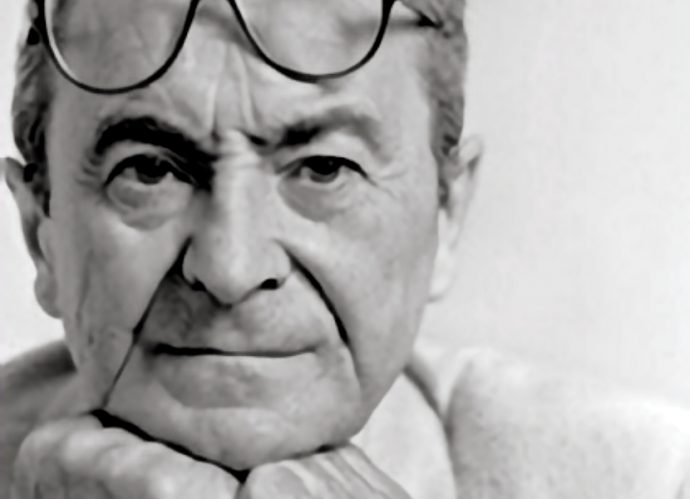
JUSTIFICATION
During the early post-war years, when the word design was not yet part of the current lexicon, Gavina began his exceptional adventure as an inexhaustible creator and instructor, always curious, always outside or on the margins of pre-existing formats and always at the service of innovation, between art and design, between ethics and aesthetics, between manufacturing company and publishing company. This human adventure ended in 2007 and outlined a cultural itinerary destined to continue over time.
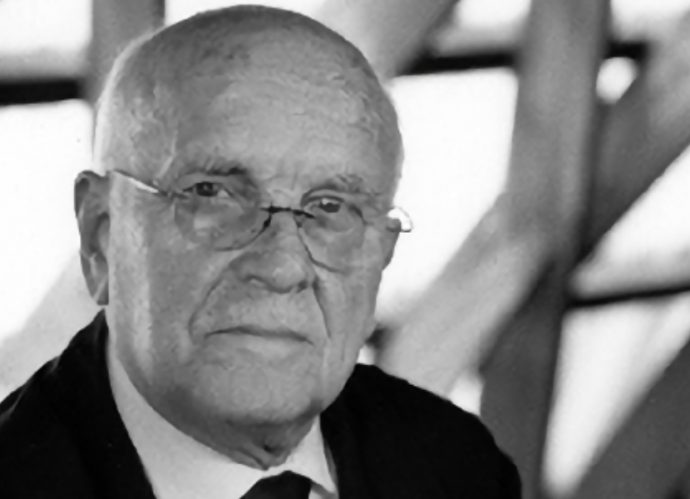
JUSTIFICATION
Behind the apparent rebuttal of technology, which represents a distinctive element of his work, there is instead a constant search for the right technology, the most appropriate, with nothing more and nothing less. Milá’s design stems from a reflection on concrete problems, freed from prejudices and theoretical postulations. For him, who confessed that he had never been too interested in developing a definition of design, “the best design is achieved with the minimum of elements”.
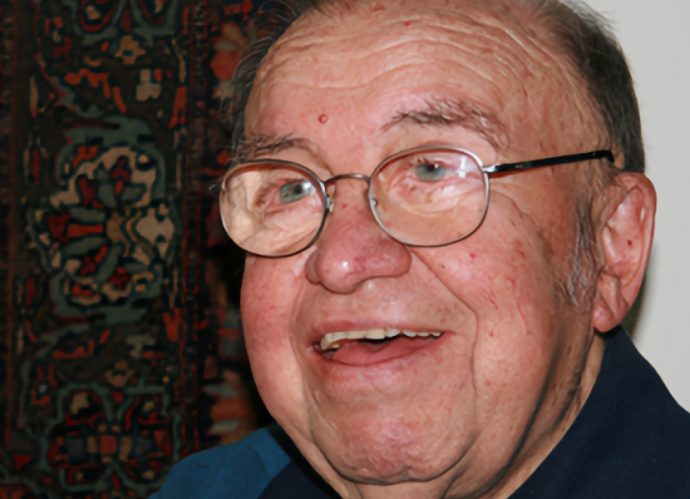
JUSTIFICATION
The list of all his work places him among the masters of contemporary graphic design. His tremendous level of culture, constant attention to the suggestions of the artistic avant-gardes and his profound humanism are an indication of freedom, which allowed him to overcome disciplinary restrictions and fashions. His lesson was exceptionally useful for the education of the new sensitivities in vogue in the world of communication.

JUSTIFICATION
An architect in the most cultured sense of the term but also a prolific designer during a long association with Afra Bianchin, he has designed some of the most representative icons of Italian design. His attention to production processes, technological and formal innovation and, above all, his continuous and passionate research aimed at reinventing the use of materials, have become a significant part of the recognizability of Italian design. In his work, tradition and innovation are welded together in one of the finest and most coherent lessons onf method and creative freedom.
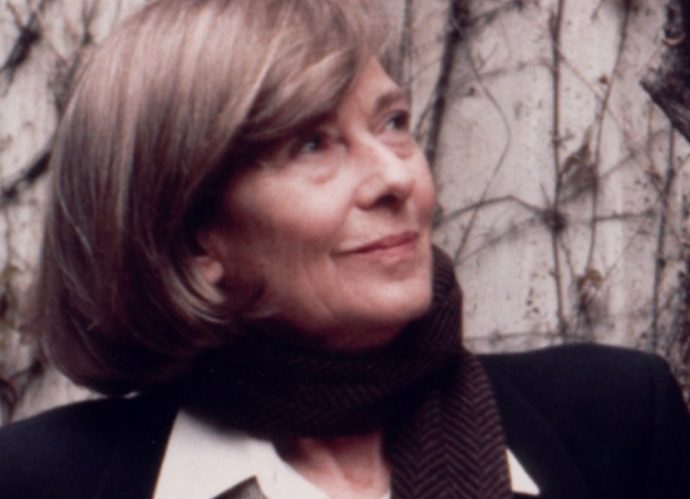
JUSTIFICATION
Graduated from the Milan Polytechnic in 1951, she began her professional activity in 1963, working on civil architecture and industrial design. She has designed single-family homes, apartments, museum installations, offices, shops in Italy and abroad. In the field of industrial design she has been involved with the design of elements for furniture and components for the building industry. She has lectured and taught at Berkeley, Barcelona, São Paulo, Rio de Janeiro, Detroit and Los Angeles. From 1981 to 1983 she taught Architectural Design and Industrial and Furniture Design at the Faculty of Architecture of the Milan Polytechnic. She was a member of the board of directors of the XVI Triennale di Milano and in 1986 took part in the Progetto domestico exhibition set up as part of the XVII Triennale. She has obtained numerous Italian and international awards, and is the author of Le dimensioni umane dell’abitazione (1980), La dimensione del domestico (1980) (in La casa tra tecniche e sogno, edited by Marisa Bertoldini, 1988) and Progettista a committente (in Struttura e percorsi dell’atto progettuale, 1991).
Photo: Federico Ambrosi
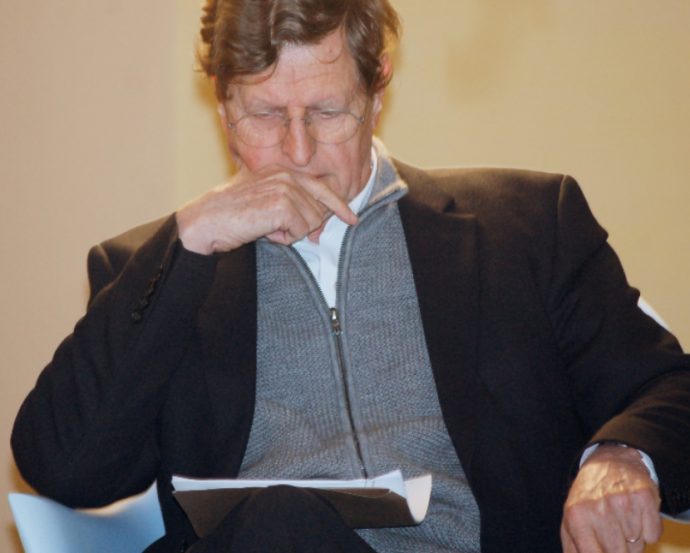
JUSTIFICATION
Born in 1936 in Switzerland, he studied architecture in Lausanne and Hamburg. An architecture and design historian and critic, he taught at the Hochschule für angewandte Kunst in Vienna, the Hochschule der bildende Künste Saar in Saarbrücken and the ISIA in Florence. He was director of the Kunsthaus in Hamburg, the Internationales Design Zentrum in Berlin (IDZ) and the Center de Création Industrielle (CCI) at the Center Georges Pompidou in Paris. He is the author of numerous publications in the field of art, architecture, design and applied arts, and was director of the magazines “Traverse”, “Domus”, “Crossing” and “Rassegna”. Author, curator and responsible for numerous exhibitions and congresses of architecture, art and design in Austria, Belgium, Finland, Germany, Italy, Slovenia, Spain, Switzerland and the United States, he is a consultant for companies and institutions in Austria France, Germany and Italy, and responsible for the reissues of Gebrüder Thonet Vienna.
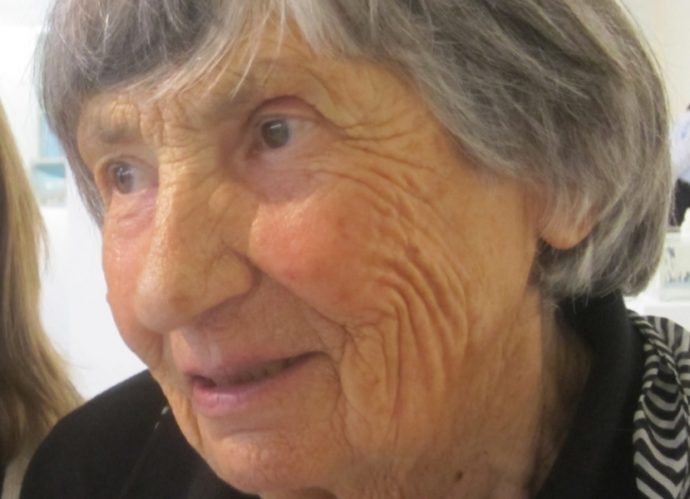
JUSTIFICATION
She was born in Sondrio on 12 November 1921 and studied at the Collegio Reale delle Fanciulle in Milan. She attended Francesco Messina’s courses at the Brera Academy, where she graduated in Sculpture. Throughout the 1950s and 1960s she worked in the artistic office of the Laveno Ceramic Society, first with Guido Andloviz, a leading figure in the history of Italian Design in the twentieth century, and then succeeding him. In the 1970s she was asked to direct the Richard Ginori Art Centre with responsibility for all the articles in production. After the establishment of Pozzi-Ginori, she decided to manage the sanitary ware and tile design department. Since 1978 she worked as a consultant and freelance, developing a wide range of products for various companies (including bathroom fixtures for Cesame and taps for Raf) and looking at all kinds of materials at every element of design (from architecture to jewellery), from ceramics, to glass, to metal. Many of her creations are exhibited in museums around the world, including the MoMA in New York.

JUSTIFICATION
Born in Lecco in 1951, he began his career at the Fiat Style Centre in 1972, moving to the Studio Bonetto in Milan in 1975 as head of interior design. From 1979 to 1986 he was head of car design at the IDEA Institute in Turin and, after a brief experience at Trussardi Design Milan, he worked for Alfa Romeo as head of the Milan Design Centre. In 1994 he was appointed manager responsible for the development of the new models at the Fiat and Alfa Romeo Design Centre, for which he designed the 156 (1997) and 147 (2001). After moving to the SEAT Design Centre in 1999, he oversaw the Salsa and Tango concept cars, as well as the León, Altea and Toledo models, among others. Since March 2002 he has been responsible for design at the Audi Group brands (Audi, Lamborghini and SEAT), obtaining the “Most beautiful car in the world” award in 2004 for the Audi A6 and the Lamborghini Murciélago Roadster. Since 2007 he has been responsible for design at the Volkswagen Group, where he follows all the brands and for which he has created the sixth generation of the Golf (2008) and the new Polo.
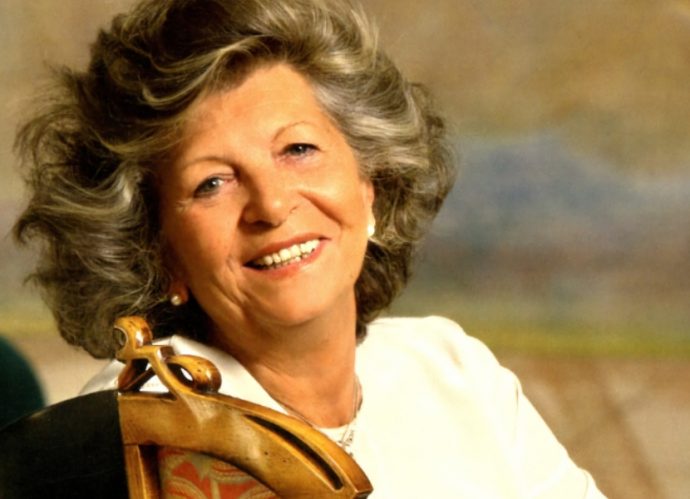
JUSTIFICATION
She lived through the establishment of Italian design together with Sergio Gandini, her companion from when she was young and whose choices she shared and inspired with freedom and passion. Together in the early 1960s they decided to get involved in the world that would later be defined as “Italian design”, starting with distribution and opening the “Stile” shop in Brescia, where Piera Pezzolo Gandini was responsible for administration, sales and warehouse management, logistics and brand management. Here she also organized exhibitions by artists and designers from Mario Ceroli to Mirabili, Archizoom, Mario Botta and Antonia Astori, contributing to the widespread diffusion of design culture. “Stile” also played an important role in the innovative choices inherent in the management of Flos, a lighting company chaired since 1965 by Sergio Gandini. Firmly convinced of the originality of the encounter between entrepreneur and designer, she is currently dedicated to building the Flos historical archive.
Photo: Studio Allegri

JUSTIFICATION
For over fifty years he has been involved in visual communication design, experimental research and operational methodology, collaborating with the leading Italian companies. A number of well-known didactic texts have resulted from his professional experience and published by Lupetti Editori di Comunicazione, Corraini Edizioni and Franco Angeli. Since 1999 he has been co-owner of a design theory and practice workshop at the Politecnico di Milano Design School where, for five years he has been in charge of a course in advanced Type Design training. He was president of the Art Directors Club of Milan, Chairman of BEDA, president of Icograda and president of ADI from 1999 to 2001, creating the ADI Foundation for Italian Design. During his career he has obtained numerous awards and recognitions including a Special International Award at the XIII Triennale di Milano; two ADI Compasso d’Oro awards in 1979 and a third in 2004 and the 2008 Medal for Design from the Anahuac Mexico Norte University. In 2002 he was awarded an honorary degree in Industrial Design by the Politecnico di Milano.
Photo: Monica Fumagalli
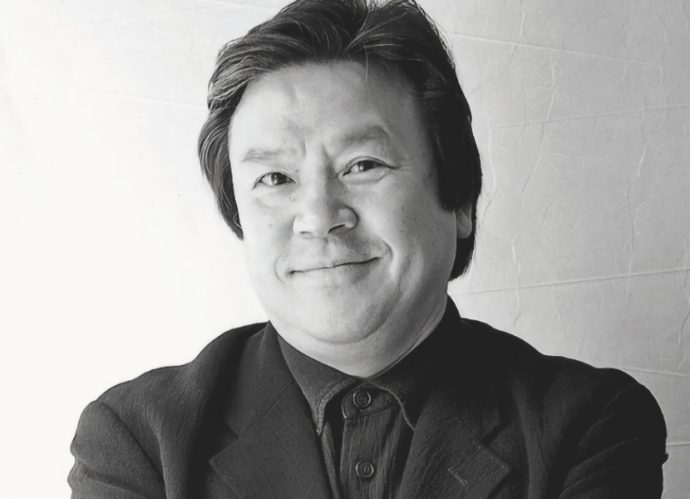
JUSTIFICATION
Since 1969 he has expanded his professional sphere from Japan to Italy and the international scene in general as a designer of environments and industrial products. He has designed numerous successful products, from furniture to LCD televisions and from robots to household appliances and furnishing accessories. In recent years he has dedicated himself to training, holding seminars and workshops in Japan, Europe and Asia and he continues, as always, to dedicate attention to traditional craft techniques and the development of local manufacturing activities.

JUSTIFICATION
Born in Novara in 1932, in the 1950s he began his research into visual perception, the psychology of vision and the programming of perceptual structures. An exponent of Programmed and Kinetic Art, in 1963 he coordinated the Nuova Tendenza group. At the same time, he began his career as a designer dealing with graphics and architecture and collaborating with Danese, Driade, Magis, Olivetti, Robots and Zanotta among others. He participated in the Venice International Art Biennale in 1968, 1978 and 1986 and Documenta in Kassel in 1968. He was a consultant for Urban Decor for the Municipality of Milan and president of ADI from 1976 to 1979. He has been awarded the Compasso d’Oro four times and is a member of the Parma Studies Centre and Communication Archive, which contains about nine thousand original drawings by him. His numerous publications include Funzione della ricerca estetica (1970), Ipotesi di rifondazione del progetto (1978), Progetto e passione (2001), Autoprogettazione? (2002), La valigia senza manico (2004), Lezioni di disegno (2008) and 25 modi di piantare un chiodo (2011).
Photo: Jonathan Xerra
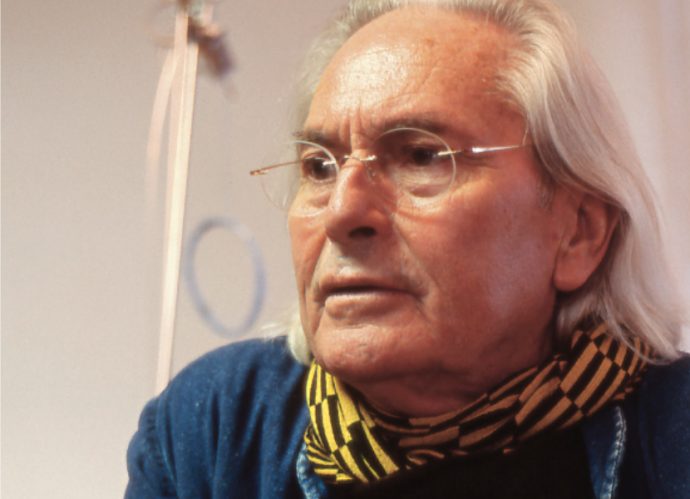
JUSTIFICATION
Born in 1932 on the island of Reichenau, on Lake Constance, he trained as a typographer in Germany and Switzerland. From 1954 to 1958 he studied graphics in Munich and from 1960 to 1963 he worked as an independent designer in New York and San Francisco. In 1966 he founded the Design M company in Munich to produce his lamps and in 1989 he presented his non-commercial research into light at the Fondation Cartier pour l ‘art contemporain in Paris. In 1999 he collaborated with Issey Miyake. Among his numerous international awards are the Lucky Strike Designer Award (2000), the Georg Jensen Prize (Copenhagen, 2002), the Fourth Oribe Award (Japan, 2003) and the Design Award of the Federal Republic of Germany (2010). He is Chevalier des arts et des lettres of the French Republic since 1986 and was appointed Royal Designer of Industry by the Royal Society of Arts in London (2005). He received an honorary degree from the Royal College of Art in London (2006) and in 2010 an anthology of his work – Complete with Bulb. Light by Ingo Maurer – was staged at the Bauhaus-Archiv in Berlin.
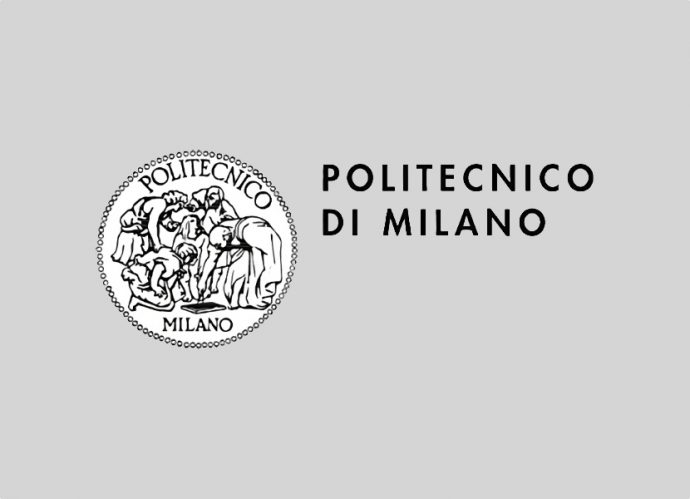
JUSTIFICATION
Design in Italian universities has developed significantly over the last twenty years. The Politecnico di Milano has contributed to this in a particular way, establishing in addition to its historical roots (consider the link between the university and some extraordinary figures in the history of design such as Gio Ponti, Franco Albini, Achille Castiglioni and Marco Zanuso) the first degree course in Industrial Design and subsequently, starting in 2002, the Faculty of Design, now known as the School of Design. This was due to the commitment of numerous individuals including Tomás Maldonado and Alberto Seassaro, first dean of the Faculty of Design. Design at the Politecnico di Milano is today an integrated system of skills that operates, between training and research, through its own structures such as the INDACO Department (Industrial Design, Arts, Communication and Fashion), with the Design Research Doctorate, the Laboratory System and the POLI.design Consortium. A meeting point for different cultures in constant dialogue with the professional and business worlds and with the main international research and training centers, design at the Politecnico has played a fundamental role in the creation of a point of reference scientific community in Milan.

JUSTIFICATION
Founded by Carlo Petrini in 1986, Slow Food became an international association in 1989 and today, with the spread of the Terra Madre network, it has 100,000 members worldwide, national offices in Italy, Germany, Switzerland, the United States, France, Japan, the United Kingdom, the Netherlands and members in 130 countries. Slow Food means giving due importance to the pleasure linked to food, learning to enjoy the diversity of recipes and flavours, to recognize the variety of places of production and craftsmen and to respect the rhythms of the seasons and eating together. However there is a new sense of responsibility: a perspective that Slow Food has called eco-gastronomy, capable of combining respect and the study of food and wine culture with support for those in the world who work to defend agri-food biodiversity and convivial places that are part of the patrimony of material culture thanks to their historical, artistic or social value.
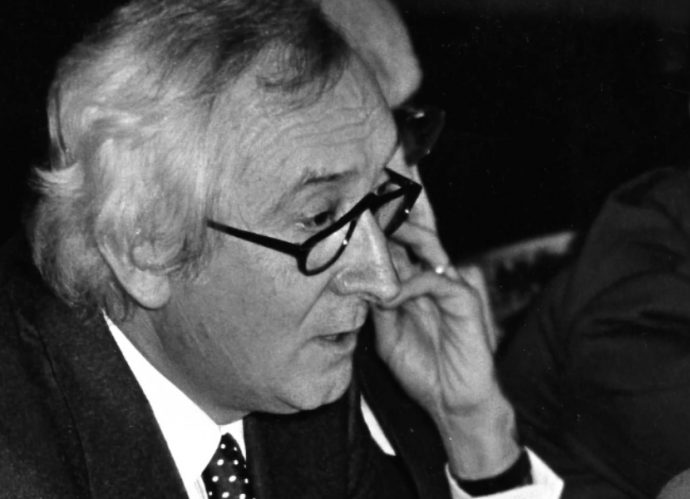
JUSTIFICATION
Born in Vigevano in 1926, he founded the Architetti Associati studio (1953-1968) with Vittorio Gregotti and Lodovico Meneghetti and then opened his own studio, dealing with architecture, urban planning and design. In the latter sector, he collaborated among others with the Acerbis, Driade, Heller New York, La Rinascente, Kartell, Raak Amsterdam, Rexite, Uchida Tokyo and Zanotta brands. His works are in the permanent collections of the MoMA in New York (the 537 Arteluce lamp) and the Victoria Museum in London (the Sheraton cabinet). He has participated in numerous Triennali di Milano and, in 1972, in the Italy: The New Domestic Landscape exhibition at the Museum of Modern Art in New York. In 1988 he held the Materials Technology course at the Faculty of Architecture in Palermo. Member of ADI since 1960, he was a member of the Steering Committee (1966-1968, 1971-1973) and was its president (1982-1984). He won two Compasso d’Oro Awards in 1979 and 1991, and two honourable mentions in 1960 and 1970.

JUSTIFICATION
Strongly oriented towards research and innovation, Unifor designs and manufactures office systems designed to meet the requirements of an extremely demanding market. The design research and experimentation conducted by Unifor can be seen not only in the study of new products, but also in the evolution of existing ones: even the most innovative and tested proposals are in fact constantly subjected to updating and improvement processes. These qualifying aspects, which have always characterized Unifor’s activity, are clearly highlighted in its products, where the issues of comfort and environmental quality, together with the skilful and non-invasive use of technology are developed by the company through a series of innovative products. Specialized in the field of highly complex large scale installations, Unifor has consolidated a stable position in the market, with a dominant presence at an international level.

JUSTIFICATION
The company designed the Macs, the best personal computers in the world, along with OS X, iLife, iWork and professional software. Apple is leading the digital music revolution with its iPods and iTunes online store. It has reinvented mobile telephony with its revolutionary iPhones and App Stores, and with the iPad it is defining the future of portable devices and mobile media.
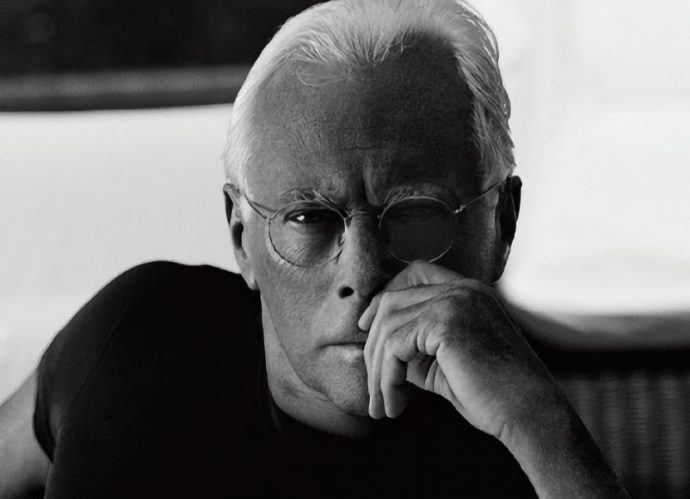
JUSTIFICATION
79 years old, he is the President and CEO of the Armani Group, a leading company in the fashion and luxury sector and among the few with a single owner directly involved in all strategic, style and design choices. In 1957, having abandoned his medical studies, he moved from Piacenza, where he grew up, to Milan, where he worked as a buyer for the La Rinascente department stores. Later he collaborated with Nino Cerruti and, as a freelance stylist, with various companies. In 1975, at the suggestion of his partner Sergio Galeotti, he decided to create his own brand and Giorgio Armani S.p.A. was created on 24th July with a prêt-à-porter line for men and women with immediate success. In 1980 he made the costumes for the film American Gigolo and the success of the film marked the rise of Armani style in the collective imagination. He is Grand Officer of the Order of Merit of the Italian Republic and in 2008, in Paris, he was awarded the Légion d ‘Honneur. Celebrated in 2000 with an exhibition at the Solomon R. Guggenheim Museum in New York, Giorgio Armani has always been involved in humanitarian activities for, among others, Green Cross International. In 2005, the designer presented his first Giorgio Armani Privé Haute Couture collection while in 2010 he inaugurated the first Armani Hotel in Dubai, followed in 2011, by one in Milan.
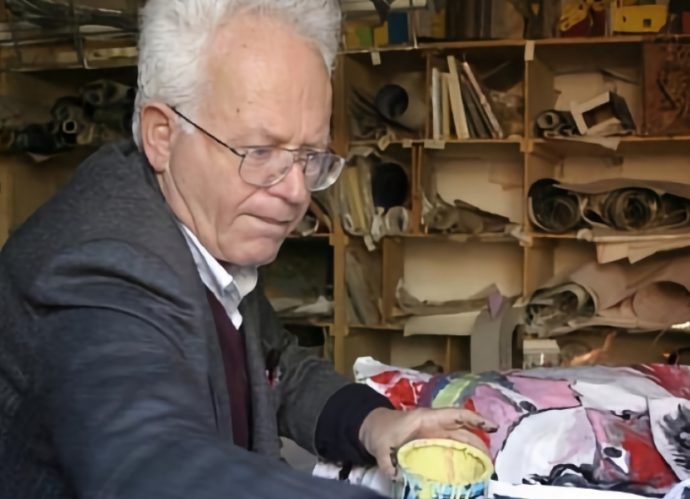
JUSTIFICATION
Born in Potenza on 1 May 1931, Riccardo Dalisi held the chair of Design at the Faculty of Architecture in Naples, where he was also director of the School of Specialization in Industrial Design.
In the seventies, together with Ettore Sottsass, Alessandro Mendini, Andrea Branzi and others, he was one of the founders of Global Tools, a counter-school of architecture and design that brought together the groups that in Italy covered the most advanced area of so-called “radical architecture “. Always engaged in social work (his neighbourhood work with the children of the Rione Traiano, the elderly of the Casa del Popolo in Ponticelli and, in recent years, a commitment to the young people of the Rione Sanità and Scampia in Naples was outstanding), he has combined research and teaching, developing a unique artistic expression as the common thread throughout his life and work. In 1981 he won the Compasso d’Oro for research on the Neapolitan coffee maker. In the last thirty years he has dedicated himself to creating a relationship between university research, architecture and design, sculpture and painting, art and craftsmanship, keeping at the centre the objective of human development through dialogue and the potential for creativity that it releases. In 2012 his book Acqua dueO, published by H2o new scenarios for survival, won one of the Los Angeles Green Dot Awards for environmental sustainability.
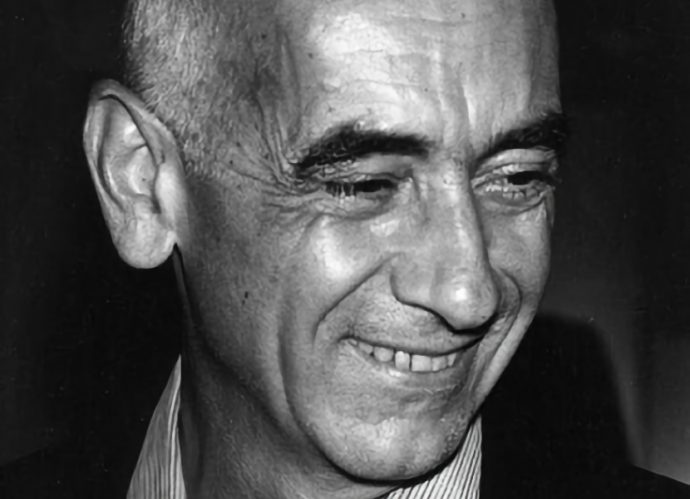
JUSTIFICATION
Born in Valdagno (Vicenza), until 1955 he ran the family craft business there. He then moved to Milan where, with Franco Meneguzzo, artist and ceramist, he founded DEM (Danese e Meneguzzo), a ceramic workshop for the creation of both mass-produced objects and unique hand-modelled pieces. In 1957, together with Jacqueline Vodoz, he set up the Danese company and began the partnership with Bruno Munari and Enzo Mari. He continued ceramic production with Meneguzzo and then on his own, and collaborated with Giovanni Belgrano, Achille Castiglioni, Michel Fadat, Marco Ferreri, the IARD Group, Angelo Mangiarotti and Kuno Prey. Having sold the company in 1992, he established the Jacqueline Vodoz et Bruno Danese Association in Paris, with operational headquarters in Milan, which held exhibitions and organised research projects. In 2004 the association ceased its activity and the Jacqueline Vodoz and Bruno Danese Foundation was established, which manages the Danese historical archives and art collections.
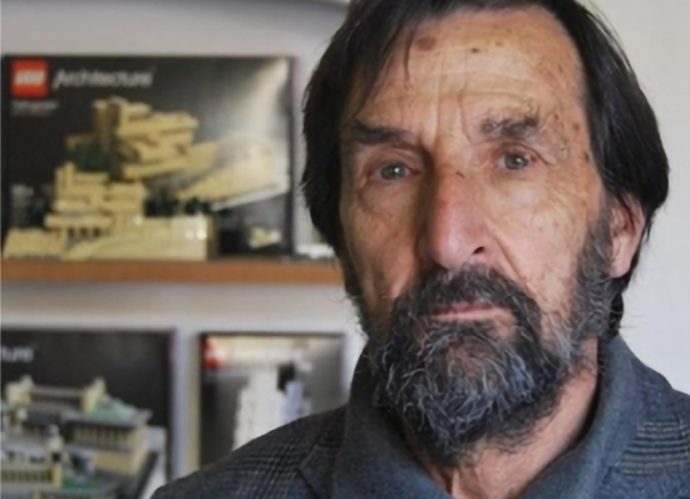
JUSTIFICATION
After graduating in Economics and Commerce, he worked in Milan in the editorial offices of the periodicals of Etas Kompass (including Architettura by Bruno Zevi), then at Henraux di Querceta, where he followed, among other things, the work of the Chiesa dell’Autostrada by Michelucci and the Mandarin Hotel in Hong Kong, in addition to the restoration of the frontals of the Abbey at Montecassino. In 1970, involved with marketing for Poltronova, he came into contact with design and the Florentine groups Archizoom and Superstudio. In 1972 he took over the management of the Poltronova store in Florence with Paolo Stefani. From the meeting with Cesare Cassina and Dino Gavina, the idea of a large shop in Florence was born (which Carlo Scarpa was commissioned to set up) and in 1973 International Design was founded, destined to become a reference point for design in Italy. In 1977 the Selfhabitat store opened in Florence – designed to cover the market segment competing against Habitat and Ikea in Europe – with offices in Milan, Livorno and Parma. Even today it is the most important design shop in Florence. He is one of the founders of ADI’s Distribution and Services Department, which in 2012 made him an honorary member.
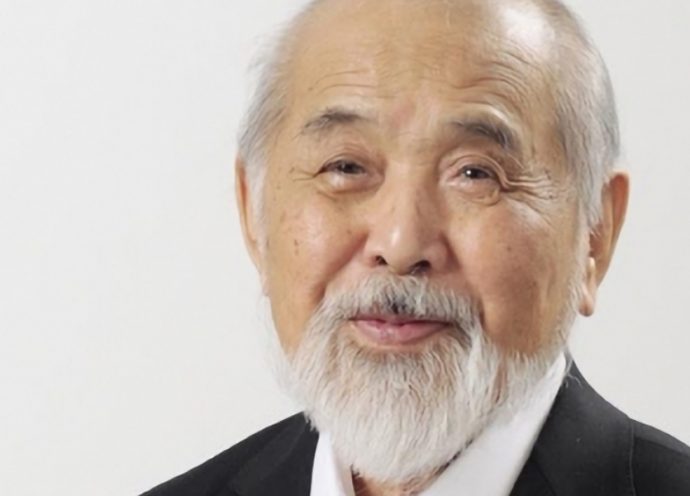
JUSTIFICATION
Born in Tokyo in 1929 and graduated in 1955 in Design from the Tokyo State University of Fine Arts and Music, in 1956 he attended the Art Centre College of Design in Los Angeles, expanding his knowledge about the meaning of industrial design and its social impact. In 1957 he founded the GK Industrial Design Associates studio, then GK Design Group Inc., of which he has held the position of president since 1991. The group has formed eleven organizations since 1966 and has since then designed objects in various sectors, from motorcycles to signage and architecture. Kenji Ekuan has played a fundamental role on the MITI committee of the Forum of Life Culture and Industry, and has put his experience and knowledge at the service of promoting Japanese design, fostering contacts between designers and the general public. He was responsible for the decision to hold the ICSID World Design Congress and the ICSID General Assembly of 1973 in Asia (in Kyoto and Tokyo) for the first time with the general title The spirit and material things. President of ICSID in 1975, Kenji Ekuan was appointed Senator in 1981. He was responsible for the establishment of Design for the World in Barcelona. He is the author of numerous books dedicated to the relationship between Japanese design and culture, including Thoughts on everyday utensils (1969) and The aesthetics of the Japanese lunch box (1970).

JUSTIFICATION
Graduated in Architecture at the Politecnico di Milano, he dedicated himself to installation architecture, coordinated graphic design projects and editorial graphics. He was the art director of Domus and for sixteen years the managing director and art director of Abitare. He has designed large exhibitions and museums and his graphic design projects have constantly featured in museum and exhibition interventions by Mario Bellini, Achille Castiglioni and Guido Canali. With Migliore and Servetto he designed the Look of the City in Turin for the 2006 Olympics and the celebrations of the 150th anniversary of the unification of Italy, summarized by the large light installation on the Mole Antonelliana. He is an honorary Royal Designer at the London RSA and among his many awards are two Compasso d’Oro (1998, 2008) and the German Design Award 2011.
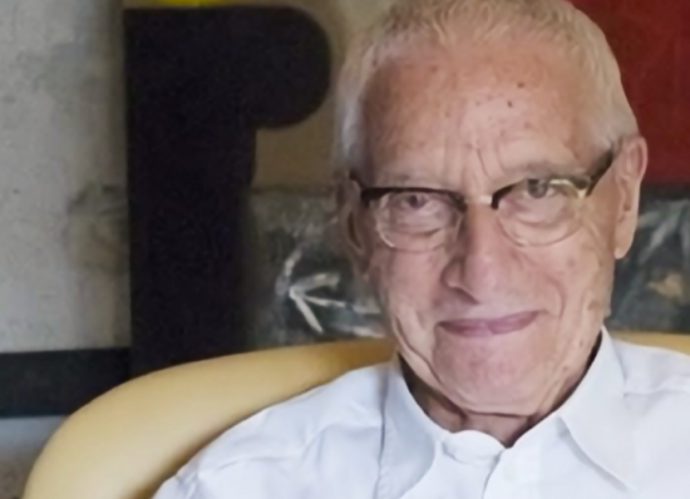
JUSTIFICATION
An architect who also created objects, furniture, environments, paintings, installations as well as architecture. He edited the magazines Casabella, Modo and Domus and collaborated with international companies such as Alessi, Bisazza, Philips, Cartier, Swatch, Hermès and Venini and was an image and design consultant for various companies, including in the Far East. He was an honorary member of the Bezalel Academy of Arts and Design in Jerusalem and honorary professor at the Academic Council of Guangzhou Academy of Fine Arts in China. He won the Compasso d’Oro in 1979 and 1981, is Chevalier des Arts et des Lettres in France, received tributes from the Architectural League of New York and an honorary degree from the Milan Polytechnic and the École Normale Supérieure de Cachan in France. He was Professor of Design at the Hochschule für Angewandte Kunst in Vienna and in 1989 he opened the Atelier Mendini in Milan with his brother Francesco, also an architect, designing buildings, structures and infrastructures built all over the world.
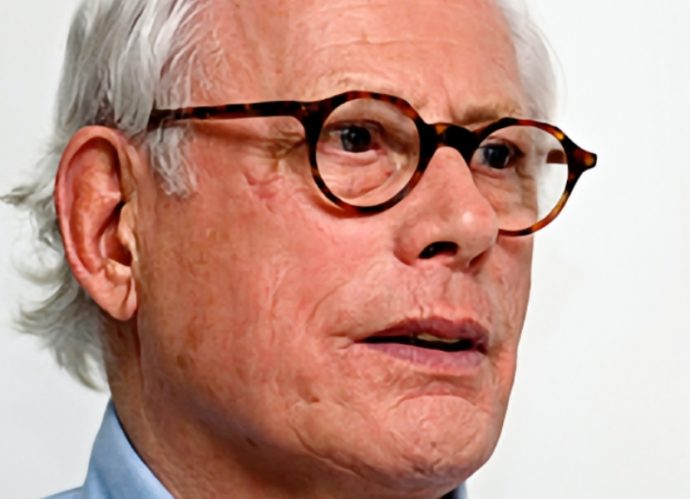
JUSTIFICATION
Born in 1932, he studied Architecture and Interior Design at the Werkkunstschule in Wiesbaden, interrupting his studies from 1948 to 1951 for an apprenticeship as a furniture carpenter. He resumed his university studies in 1953 and obtained a specialization diploma with honours. From 1953 to 1955 he worked in Otto Apel’s architecture studio, collaborating among other things with the Skidmore, Owings and Merril studio (designers of the American Embassy in the Federal Republic of Germany). In 1955 he joined Braun as an architect and interior designer, creating his first project in 1956, followed in 1957 by furniture projects for Otto Zapf. In 1961 he was appointed head of the Braun Product Design Department, of which he became director in 1968. Professor of Industrial Design at the Hochschule für Bildende Künste in Hamburg in 1981, in 1988 he was appointed executive director of Braun and then, in 1995, Executive Director for Corporate Identity. He retired from corporate and academic positions in 1997. Since 1980 he has held various exhibitions of his work and has received, among many international awards, an honorary degree from the Royal College of Art in London. In 2002 he received the Commander’s Cross of Merit of the Federal Republic of Germany.

JUSTIFICATION
The SaloneSatellite was started in 1998, when Cosmit asked Marva Griffin Wilshire to create an event to help the most promising young designers in their careers, putting them in direct contact with the exhibitors at the Salone del Mobile. It immediately became an unparalleled observatory of international youth creativity. Since then, more than 9,000 young people and 253 international design schools have met every April on this stage where Lorenzo Damiani, Patrick Jouin, Nendo, Satyendra Pakhalé, Harri Koskinen and Xavier Lust made their debut. The Selection Committee was also excellent and has seen all the major international players in the world of design. Since 2005, the event has also been held as part of the World Wide Salons in Moscow. In 2007, the tenth anniversary was celebrated with the Avverati exhibition: 450 objects put on the market by the best Italian and foreign companies. In order to constantly support young people, in 2010 the SaloneSatellite launched the I Saloni – SaloneSatellite Award competition.
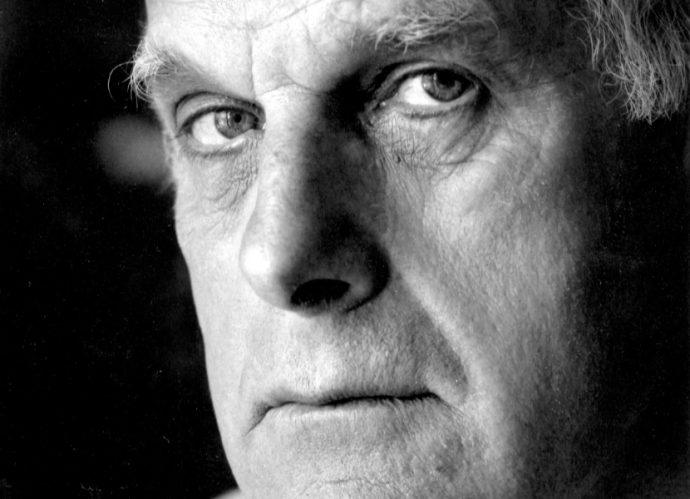
JUSTIFICATION
Born in Munich in 1932, he began his career in the Daimler-Benz Style Centre in Stuttgart, then moved to Milan where he opened a studio in 1959. His collaboration with Marco Zanuso, which began in the 1960s, continued for many years with the design of a series of televisions and radios for Brionvega. From 1980 he was the principal design consultant for IBM and Lenovo, for which he oversaw the design of personal computers worldwide. He designed the first ThinkPad laptop in 1992, the Leapfrog laptop (winner of the Compasso d’Oro in 1994) and numerous subsequent models. He oversaw the design and development of a wide range of products, from boats to vehicles, from electronics to information technology and from furniture to kitchen appliances. He taught at universities around the world and received numerous awards. He was an honorary member of the Royal Society of Arts in London and a member of the Akademie der Künste in Berlin. In 2010 he received an honoris causa degree from the University of North Carolina and in 2012 he received Cross of Merit of the Federal Republic of Germany from the President of the Federal Republic of Germany.
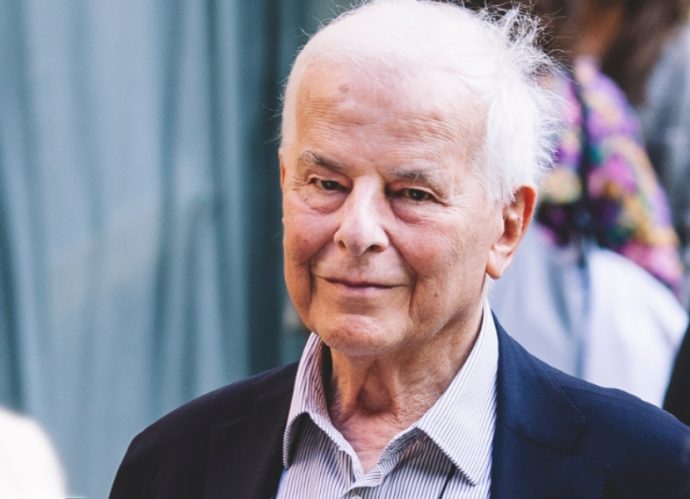
JUSTIFICATION
For having been able to combine, in his own professional experience, a poetry constantly aimed at seeking the essence of the creative gesture with a particular ability to act in harmony with the growth and development needs of many furniture companies. He provides the companies he meets with original and innovative contributions each time, thus contributing to their success.
A rigorous design path, touching various thematic areas with sobriety and measure and constantly contributing to the enrichment of Italian design culture.
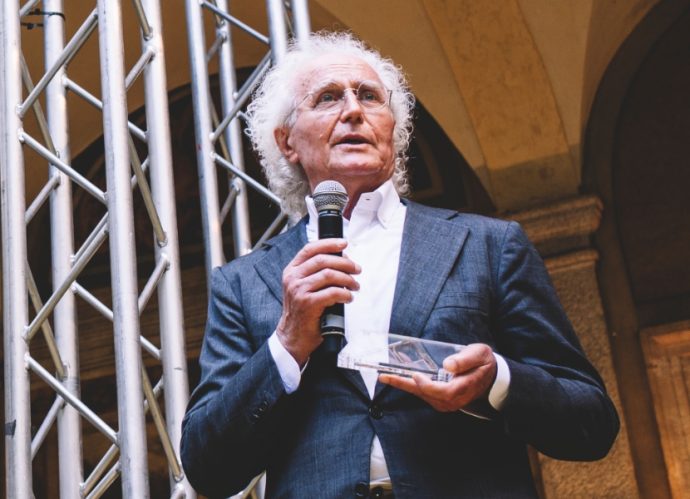
JUSTIFICATION
For his contribution to the construction of Made in Italy worldwide through a holistic vision typical of Italian design. Throughout his highly personal path, innovation and research, product application and communication, global distribution and territorial enhancement are all coordinated and synergistic factors aimed at enhancing a high design culture. His is a daily commitment projected into globalization, yet firmly anchored to the Italian reality and the territory to which it belongs.
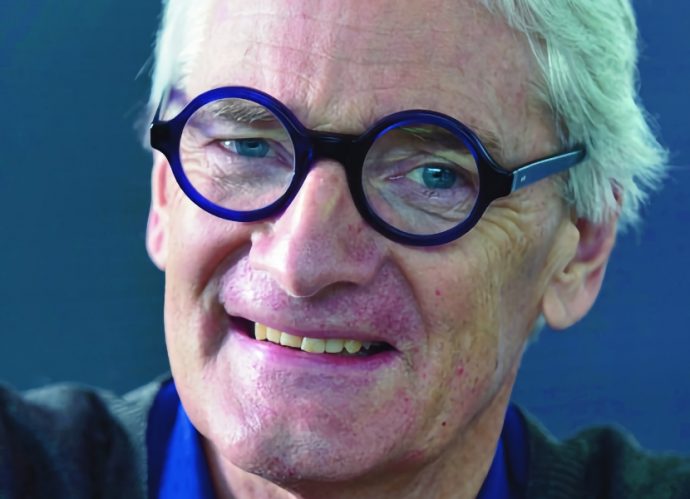
JUSTIFICATION
For the design consistency with which he has been able to combine design, invention and technological innovation, developing new products for daily use capable of improving its functionality and gestures. As a designer and inventor he was able to anticipate research into materials which in the case of his products has become an important link between form and performance. As an entrepreneur he has always supported research and given space to young creative professionals through the creation of a foundation that makes innovation its distinctive feature.

JUSTIFICATION
For the precious contribution given to design as a vehicle of knowledge and virtuous exchange between distant cultures. Fascinated as a young man by Italian creativity, through his long and distinguished professional trajectory, he has been able to absorb and rework the inclusive virtues of a design made up of values and commitment even more than forms. An anticipator of the complex relationship between design and self-production, he has managed over time to become an important part of Italian design culture.
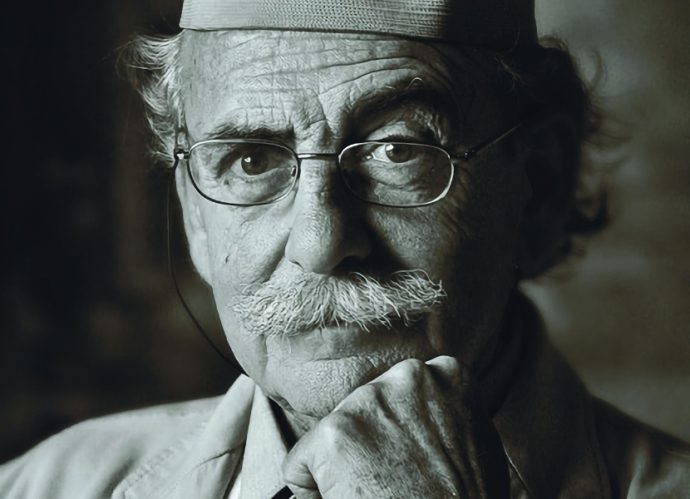
JUSTIFICATION
Creativity, passion and commitment are the distinctive features of a career which he has developed with a consistency that has often been self-critical and never lazy while playing numerous roles over time. A constant commitment to profound and unconventional values of “know-how” design, anticipating issues of great relevance today. He immediately explores the potential of craftsmanship, deepening the aspects of its relationship with industry and studies the relationships between the individual and the context, prefiguring new scenarios for the liveability of urban environments.
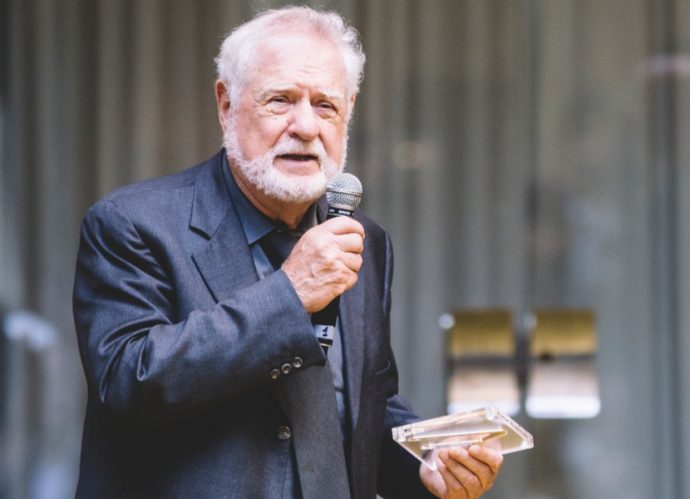
JUSTIFICATION
For having created products during his long career as a designer in which the technological, typological, material and functional innovation has often been ahead of its time. For having traced, starting from the 60s and 70s, a new path in the design of bathroom products, revolutionizing an entire product sector that has profoundly changed since then. For having generously passed on his knowledge and intuitions to younger generations, creating in Rome a group of designers who work successfully in an area where design was, at the time, little known.

JUSTIFICATION
Rules and emotion distinguish his professional career, built around constant discretion and elegance, where the creative gesture is never separated from its functional justification and always aimed at improving the use of the designed artifacts. A career path typified by generous commitment in sharing experiences, capable of being an example for colleagues, as well as for the younger generations of students he helped to train.
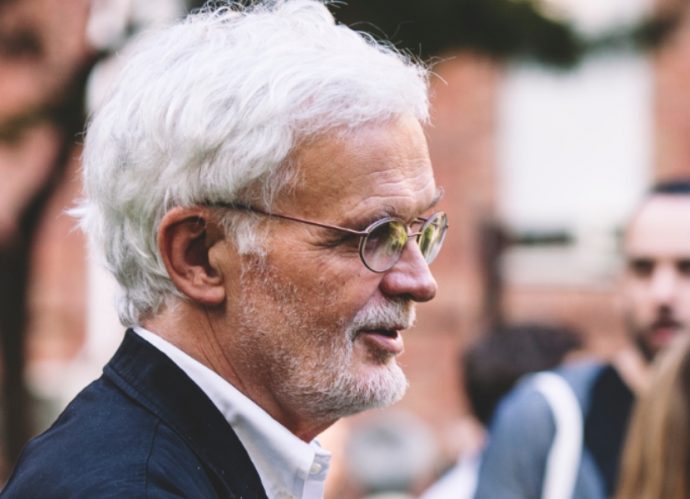
JUSTIFICATION
For his constant commitment to analysis and theoretical development which in recent years have been able to foreshadow increasingly broader areas of application in terms of designing today. This commitment is dedicated to sharing knowledge linked to ethical values, environmental sustainability and the pursuit of original forms of social innovation, knowledge around which planning communities in many parts of the world are recognized today. His thinking was free from ideological preconceptions and conditioning, never utopian but well placed in reality with the aim of constantly improving it.
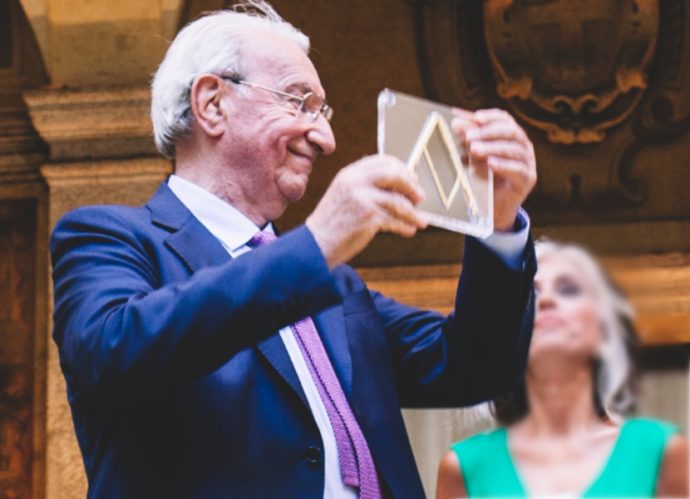
JUSTIFICATION
For having constantly been in search of excellence in the arts and design, transforming a prestigious historical brand into a modern company in which design, technology, craftsmanship and tradition blend in perfect harmony while maintaining the very high quality of the products. For having created a research centre in the heart of the Marche region, where the best Italian and international designers have succeeded in creating iconic products appreciated all over the world. For having always combined the entrepreneurial aspect with the cultural one, constantly engaging in training projects that involved workers and the territory they belong to.

JUSTIFICATION
For constant and valuable commitment to design through many years of activity as a company designer, engaged in the complex design management focused on world markets with great knowledge and sensitivity towards the cultures and customs of other populations. As a designer he has managed to shake up the static world of the domestic appliance, giving strength and dignity to forms never separated from functions and at the same time proposing solutions with a strong emotional impact. The Award is also for his great human and professional ability, capable of motivating and enthusing all those people who have been part of his design team.

JUSTIFICATION
Passionate entrepreneur, with solid managerial training who grew up immersed in design culture, he was able to research and practice organizational and relational models that marked the evolution of the industrial landscape and Made in Italy culture. New areas, new materials, new formulas for sharing knowledge were fertile ground for his curiosity and his generosity. His was an undertaking ultimately characterized by a constant commitment to spreading the values of Italian design worldwide.

JUSTIFICATION
It is often said that to run fast you have to run alone, but to go far you have to run with others. Undeniably not the case with these three who were friends before being partners and who have been able to run both fast and far and in this race always orienting themselves through the culture of design. An entrepreneurial commitment that over time has been able to combine with a no less important institutional commitment for the spreading and defence of Made in Italy.
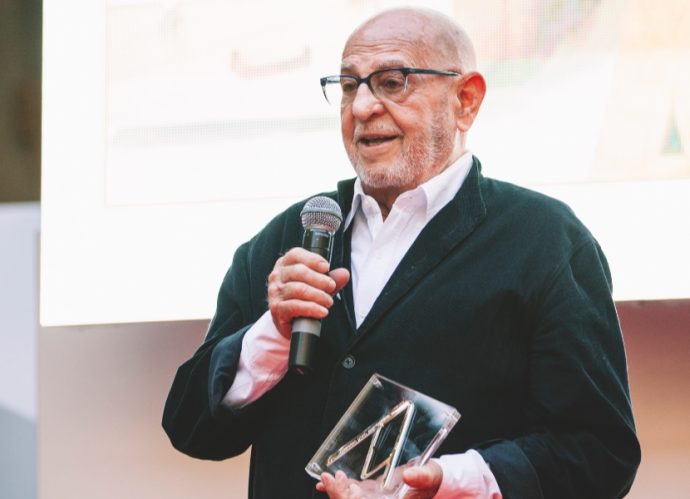
JUSTIFICATION
A career based on constant trust in the value of design and its inspiring principles. His personal contribution to the knowledge and dissemination of Italian design in Anglo-Saxon culture is particularly important. In happier times, Made in Italy companies and designers have found concrete and enthusiastic support in him for the expansion of their boundaries of influence as well as of the market.
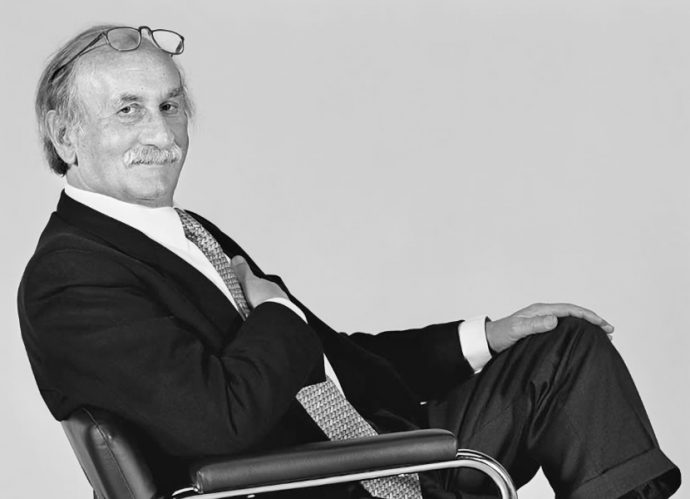
JUSTIFICATION
His non-rhetorical courage in experimenting with the future is an example for the whole culture of design: the courage to experiment with technologies, methodologies and expressive languages, always focused on the vision of a style of design close to man and his dreams. Throughout his professional career he has often opened up brand new areas for design and in particular that of the design of spaces and public services. His vast and well-expressed personal level of culture encompassing scientific and artistic fields has always combined a generous civic commitment without ever sparing his contribution to ADI, as a reference point for Made in Italy design culture.
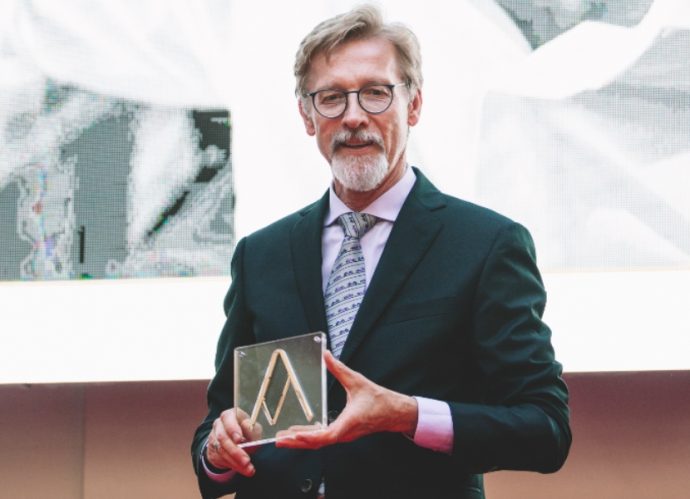
JUSTIFICATION
His professional career in the world of car design stands out for his enthusiasm and the ability to look towards the future, carrying out numerous projects for a range of automotive industries. His career also stands out for the courageous creation of a new language of form for the BMW brand, capable of giving rise to a strong DNA that has successfully characterized a generation of car models that have become a clear and significant point of reference on the automotive market.

JUSTIFICATION
Together with Jonathan De Pas, they are the creators of one of the leading Italian design studios and have been able over time to courageously explore new areas and design dimensions, while maintaining curiosity and non-rhetorical innovative capacity. Their anticipatory ability to grasp often unexpressed phenomena and problems have meant that their work has always been highly contemporary. An example par excellence of method and intuition for those who work in design culture.

JUSTIFICATION
Aerospace engineer, university lecturer and entrepreneur, in short: a man of multifaceted ingenuity. The founder of Artemide, he has immediately used design processes as a distinctive factor and along his long journey he has encouraged and promoted collaborations with the national and international design world. A coherent example of how design can be a concrete strategic lever for cultural and economic growth, he has always worked for Italian design to represent a virtuous example at an international level.

JUSTIFICATION
His cultural and professional career, which began in Italy at the Academy of Fine Arts in Bologna under the guidance of Giorgio Morandi, undoubtedly represents an exemplary trajectory in terms of consistency and method in the world of design and visual design in particular. A pioneer of territorial branding, he designed the famous I Love New York logo and a poster for Bob Dylan, defining an icon of 1960s and 1970s youth. His work has always been characterized by immediacy, originality and an apparent simplicity: every means and style are used for the creation of his graphic design projects, ranging from posters to logos, from straps for holding books to album covers, advertisements and illustrations for magazines, not least the fruitful collaboration with the Olivetti brand. An all-round professional in the Renaissance sense of the term and eclectic to the point of knowing how to understand ancient and modern at the same time.
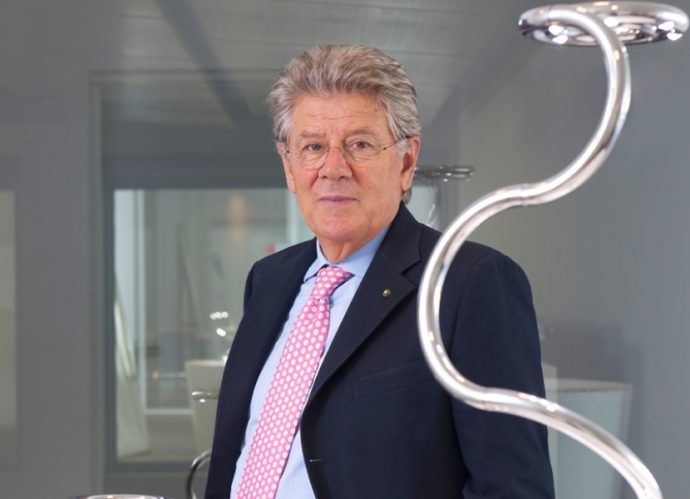
JUSTIFICATION
The pursuit of excellence in a globalized world and the enhancement of Italian know-how are distinctive features that have always accompanied his professional journey. Knowing how to look far without losing contact with one’s own territory is a worthy action in itself, but having achieved it constantly through the daily practice of all-round design is an important fact for the entire culture surrounding design and Made in Italy.

JUSTIFICATION
A consistent interpreter of the family publishing tradition, she has been able to plan and relaunch its cultural identity at an international level which has seen its serious and in-depth contents meet with editorial success. Through her constant actions she has made a fundamental contribution to the spreading of the principles of Italian know-how worldwide.
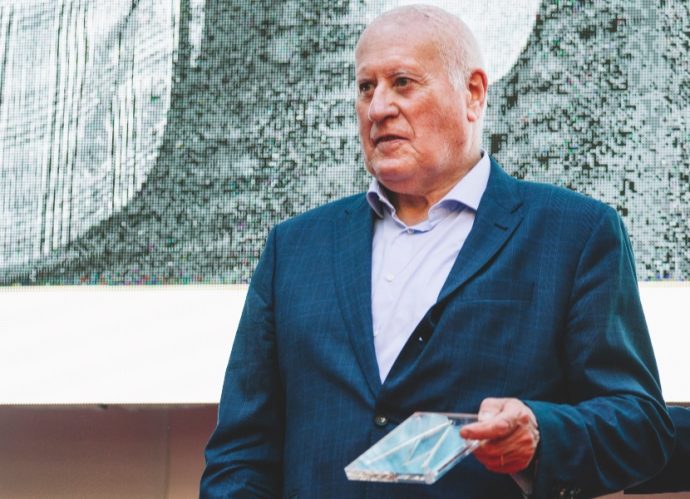
JUSTIFICATION
A promoter and facilitator of Italian design in one of its most recognized fields in the world: transportation design. His activity within public institutions has always been aimed at establishing the role of design as a cornerstone of national economic development in the wider context of international relations. ADI also wishes to acknowledge his work as an intelligent and positive ‘composer’ in the early 2000s, certainly among the most difficult years in the long history of ADI, after which the association took on the role of active and recognized representative of design for all of Italy.
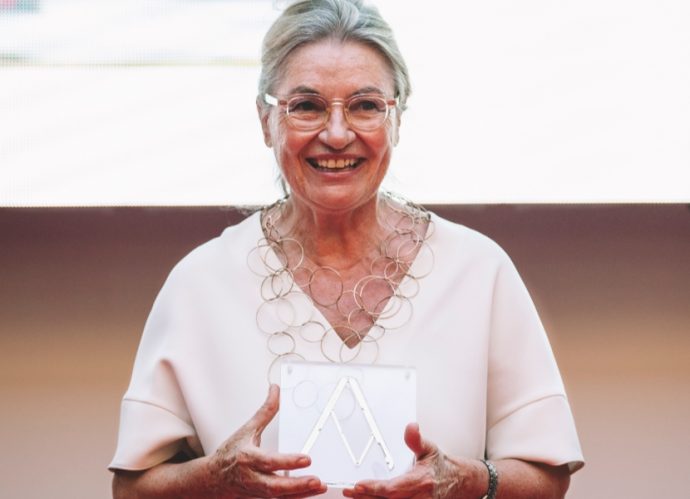
JUSTIFICATION
Consistency and constancy are the factors that have distinguished her professional career. Constant research into cutting-edge materials and techniques, combined with the personal intuition of a language capable of representing the new demands and desires of a globalized world make Nanni Strada an essential player in the evolution of the concept of fashion designer. Her work is an example of cultural commitment, aimed at overcoming the concept of seasonality or the tailoring of a suit, a commitment aimed at the concept of ‘dress as a pure element’ pursued with consistency and courage.
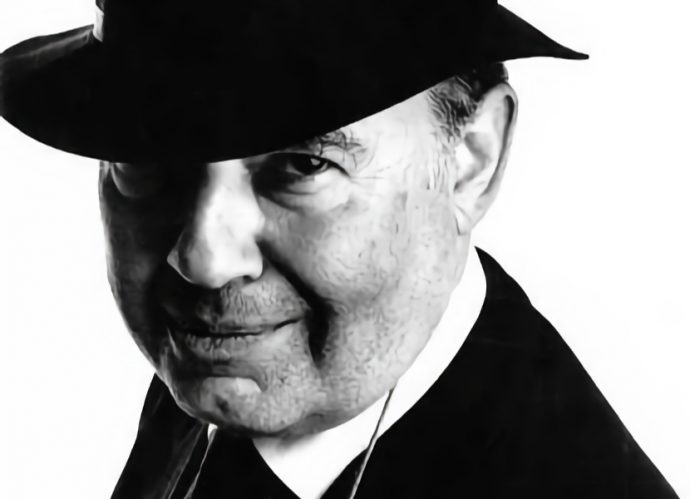
JUSTIFICATION
A precursor of the relationship between buildings and the environment, he has created solid ‘living’ manifestos of a culture for sustainable development. He has explored the relationships between this cultural model and design processes with an unusual poetry, courageously anticipating issues of urgent relevance today with respect to manufacturing responsibility. A great spreader of design culture, he has passionately supported knowledge of the best Made in Italy design throughout the rest of the world.
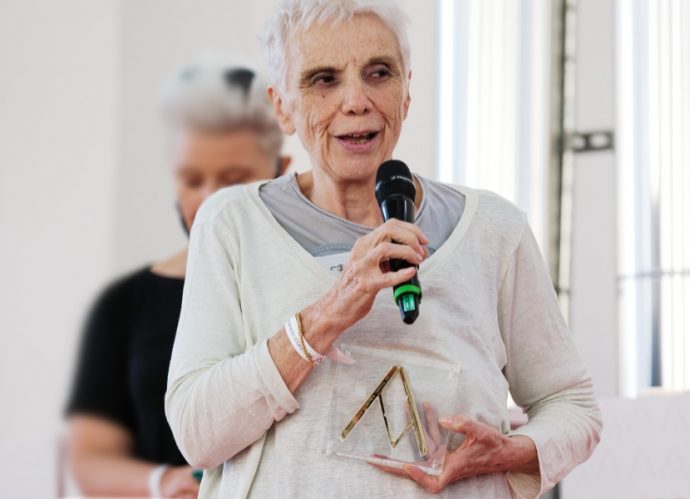
JUSTIFICATION
Preferring not the limelight but the substance of things, she has been able to contribute significantly to the spreading, critical development and teaching of the culture of design and visual communication in Italy. She is both gruff and sweet, with a combative spirit that has accompanied her all her life and has allowed her to always aim for innovation and the good of her students.
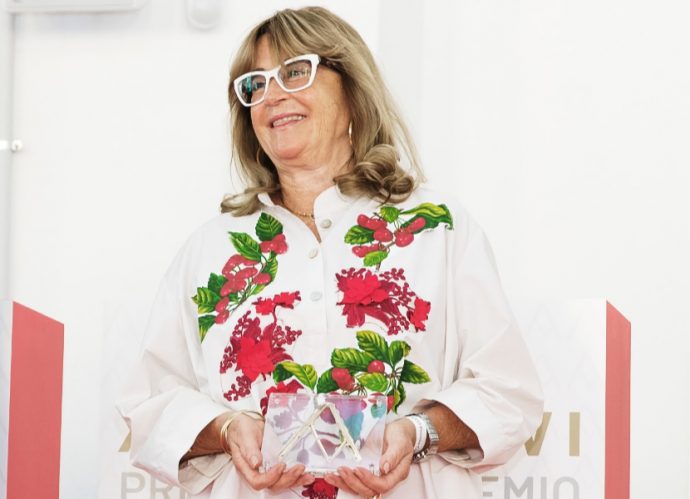
MOTIVAZIONE
Punto fermo per l’informazione intorno al sempre più vasto mondo del design, capace di anticipare fenomeni complessi attraverso uno sguardo mai banale o ideologico della contemporaneità, e mantenendo posizioni critiche sempre costruttive quanto originali. Ha saputo interpretare le trasformazioni del settore editoriale anche attraverso il contributo fondamentale per la realizzazione di modalità di divulgazione e di partecipazione allargate a eventi che, anche grazie alle sue visioni, hanno raggiunto dimensioni internazionali.
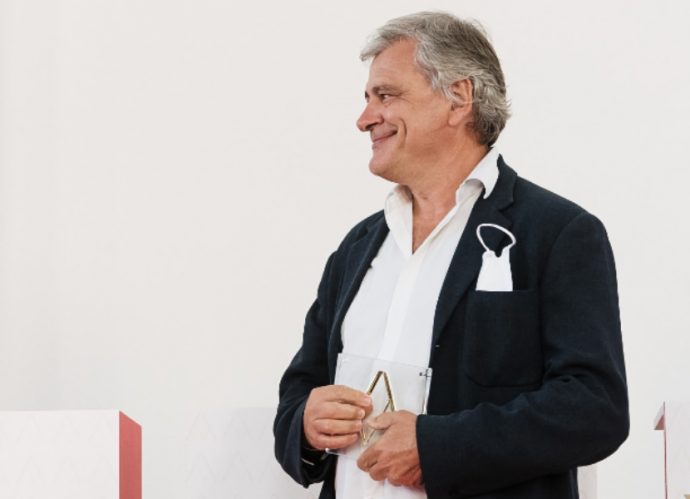
JUSTIFICATION
Grace in the gesture distinguishes all his design activity with a coherence that is as courageous as it is lucid, based on a methodological substance absorbed from a close relationship with the great masters of Italian design and away from excesses of communication. A grace capable of listening to the unexpressed, and perhaps inexpressible, the deepest and most intimate instances of a man who, in his complexity, wants to remain himself.
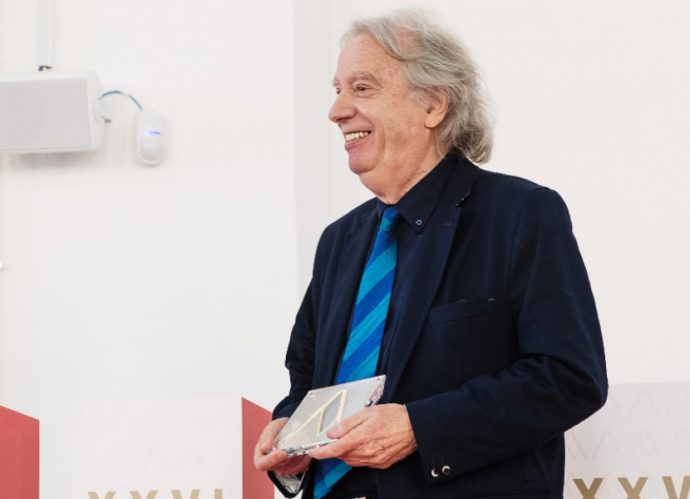
JUSTIFICATION
A multifaceted figure in the world of design: designer, entrepreneur, trainer, manager and communicator, his career has always been dedicated to civic commitment. His artistic training has led him to explore design as a sum of technical and narrative experiences, on a journey that has produced memorable objects, developed entirely through the companies he has founded over time or through relationships with historical Italian design brands. A disinterested as well as disenchanted generosity distinguishes his relationship with the young promises of design who, also thanks to his commitment as an international trainer, are confronted in a non-stereotyped way with an increasingly divided and complex profession.
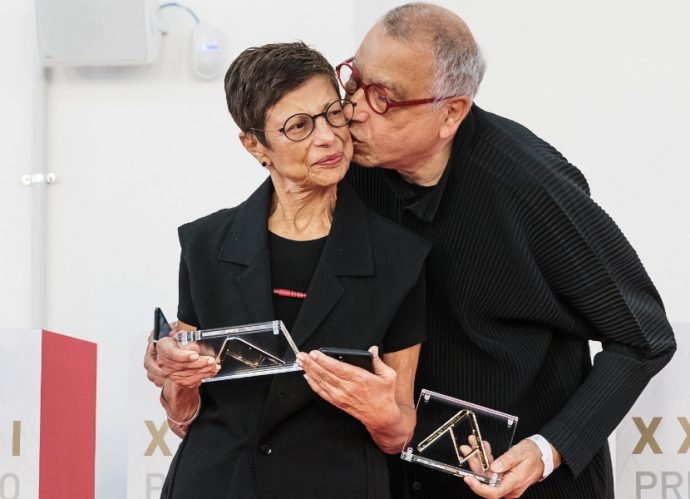
MOTIVAZIONE
A constantly evolving path, capable of innovating distribution models by inserting culture and passion and transforming the traditional concept of a store into a place of experience and knowledge for a wide audience, not just a small elite. A point of reference and enhancement for Made in Italy design culture on the international scene.

JUSTIFICATION
A virtuous example of a path that is always new but which has never sacrificed the profound values of continuity and responsibility that have always been expressed by the family. A path that has contributed to the growth of a production model that over the years has established itself all over the world for quality and reliability, capable of building and enhancing a true Made in Italy design culture. Their courageous and always discreet journey has resulted in a solid corporate culture projected towards the future, in daily experimentation conducted, step by step, with consistency and determination.
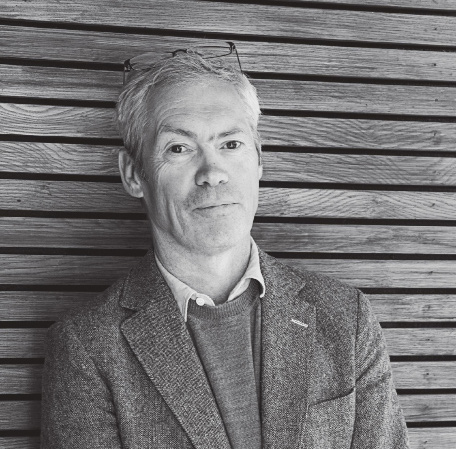
JUSTIFICATION
He has the ability to look at the world where others limit themselves to merely seeing it. A journey through projects for product types that are often very distant from each other, which he has developed in the concreteness of daily work, far from self-referential and self-congratulatory rhetoric.
Photo: Elena Mahugo
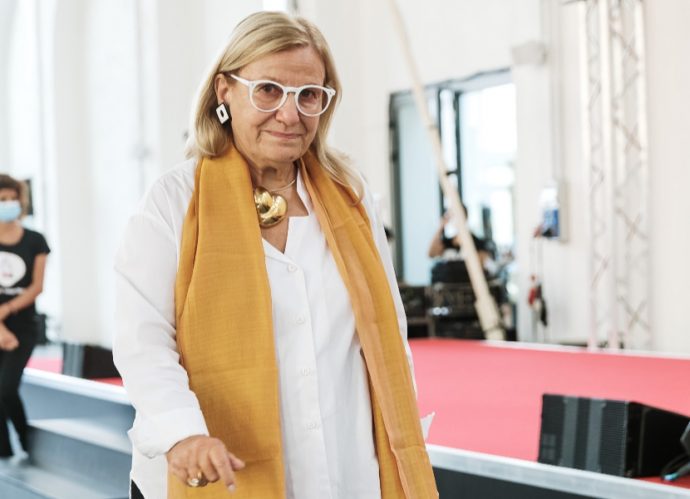
JUSTIFICATION
An original look at the world of design, based on an education linked to classical culture and the history of art criticism, has allowed her to create original and fundamental texts through which to understand the Made in Italy phenomenon in its broadest sense. A commitment that is never dogmatic but always dedicated to bringing design culture into broad professional territories, including that of teaching as well as that of spreading design culture through memorable exhibitions.
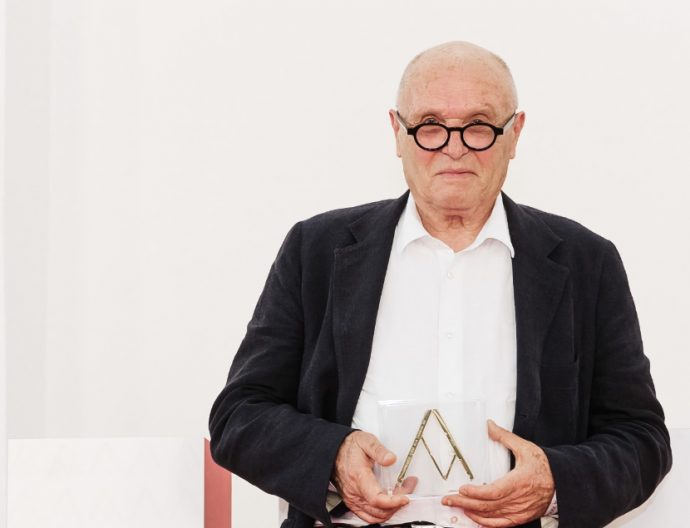
JUSTIFICATION
A volcanic personality, he has been able to graft the culture of the best in design in a territory traditionally devoted to the canons of tradition, overcoming scepticism and conformity with respect to new methodologies, new technologies and new experiences, and using every aspect of design culture. In his choices he has always dedicated special attention to the enhancement of local experiences, without failing to constantly stimulate international comparisons far from nostalgia and provincialism.

JUSTIFICATION
He represents a fundamental link between architecture and design, disciplines that in his constant university commitment are looked at and integrated in a vision that goes beyond the usual disciplinary approach in order to give us a complex vision of a project of civil modernity, something present in his vast amount of written work.
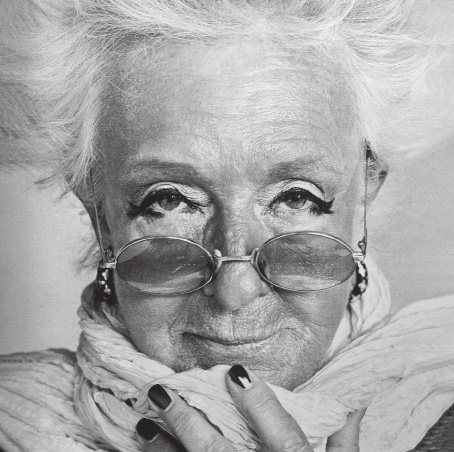
JUSTIFICATION
In her career the relationship between light and space is an area of constant research into dynamic harmonic balance. Art, architecture and design come together in an interdisciplinary vision that over time was expressed with increasing awareness in the commitment to safeguarding the environment and fragile cultures. Hers was an activity that was always consistent, capable of giving substance to the discipline through poetic projects with ‘heavy lightness’.
Photo: Ruven Afanador






